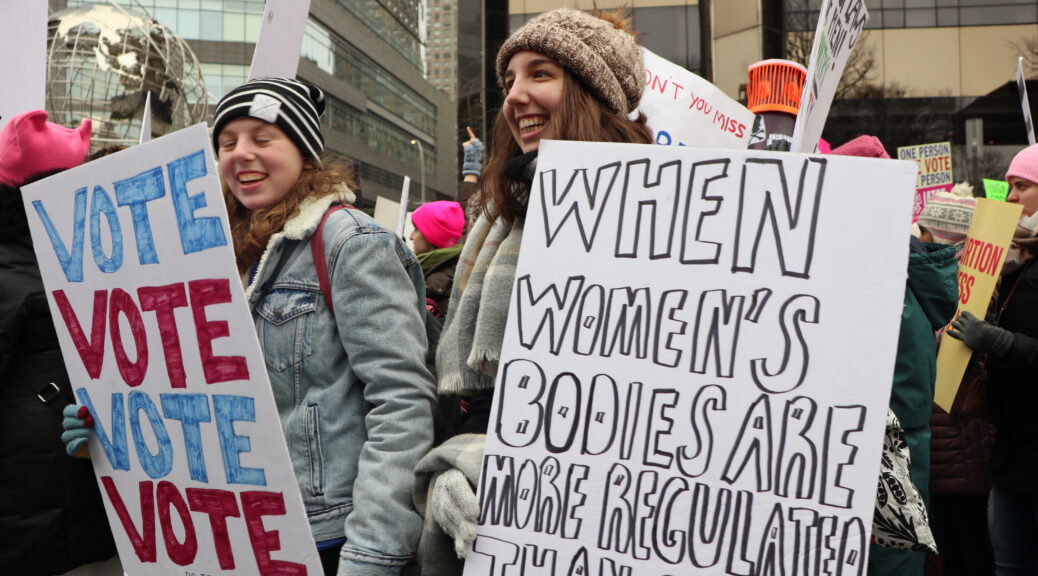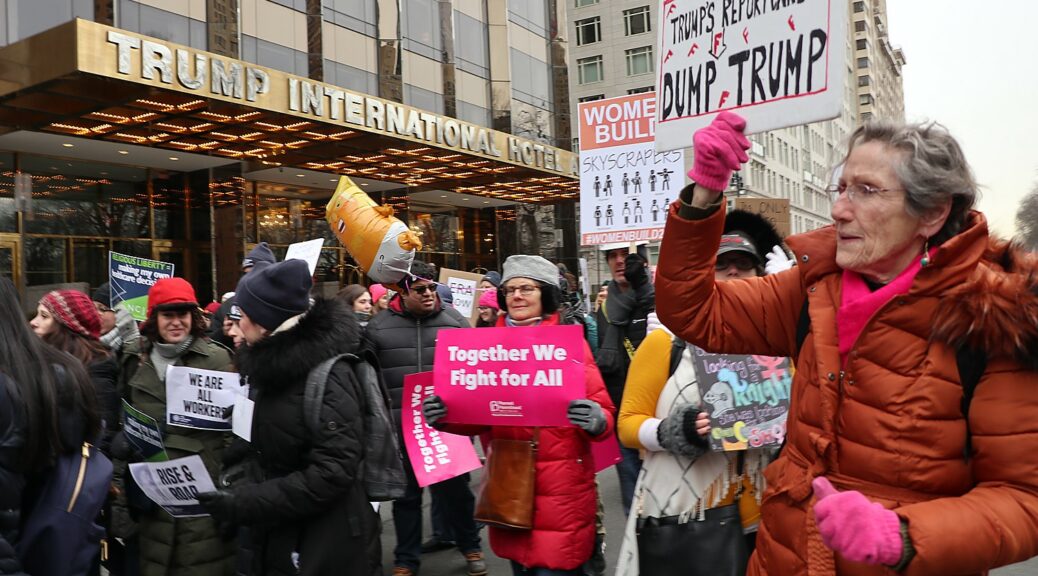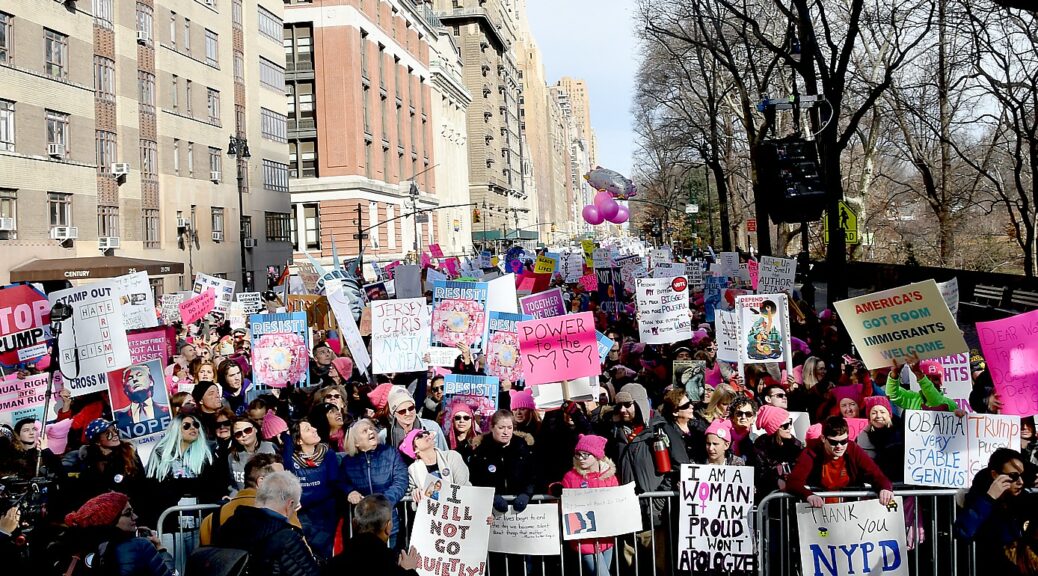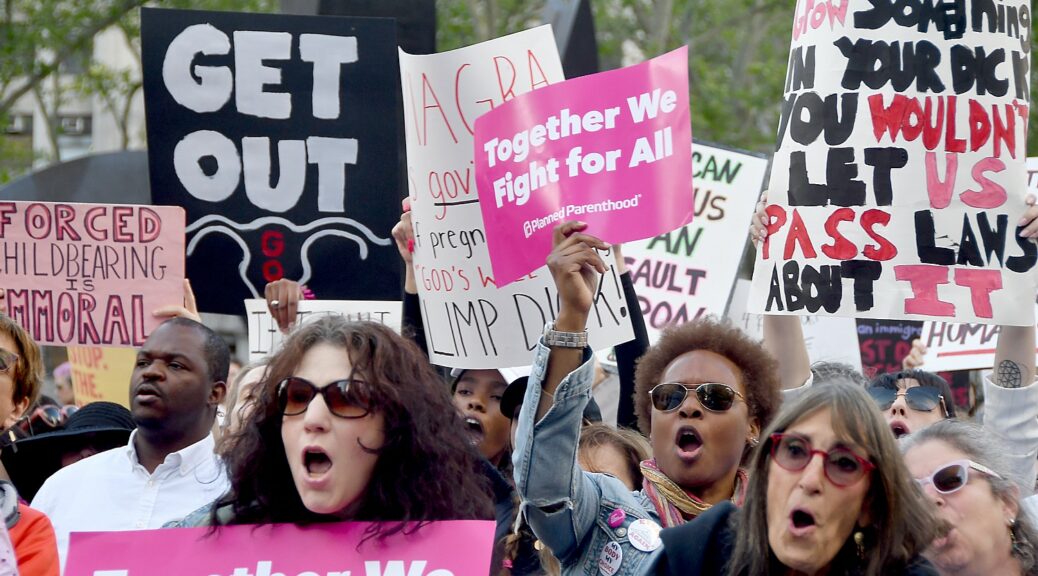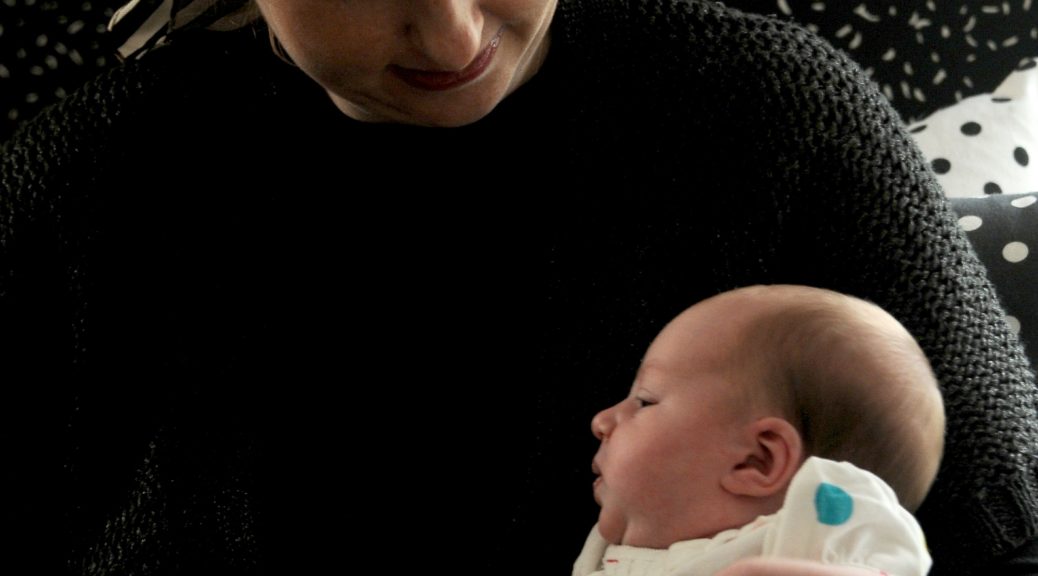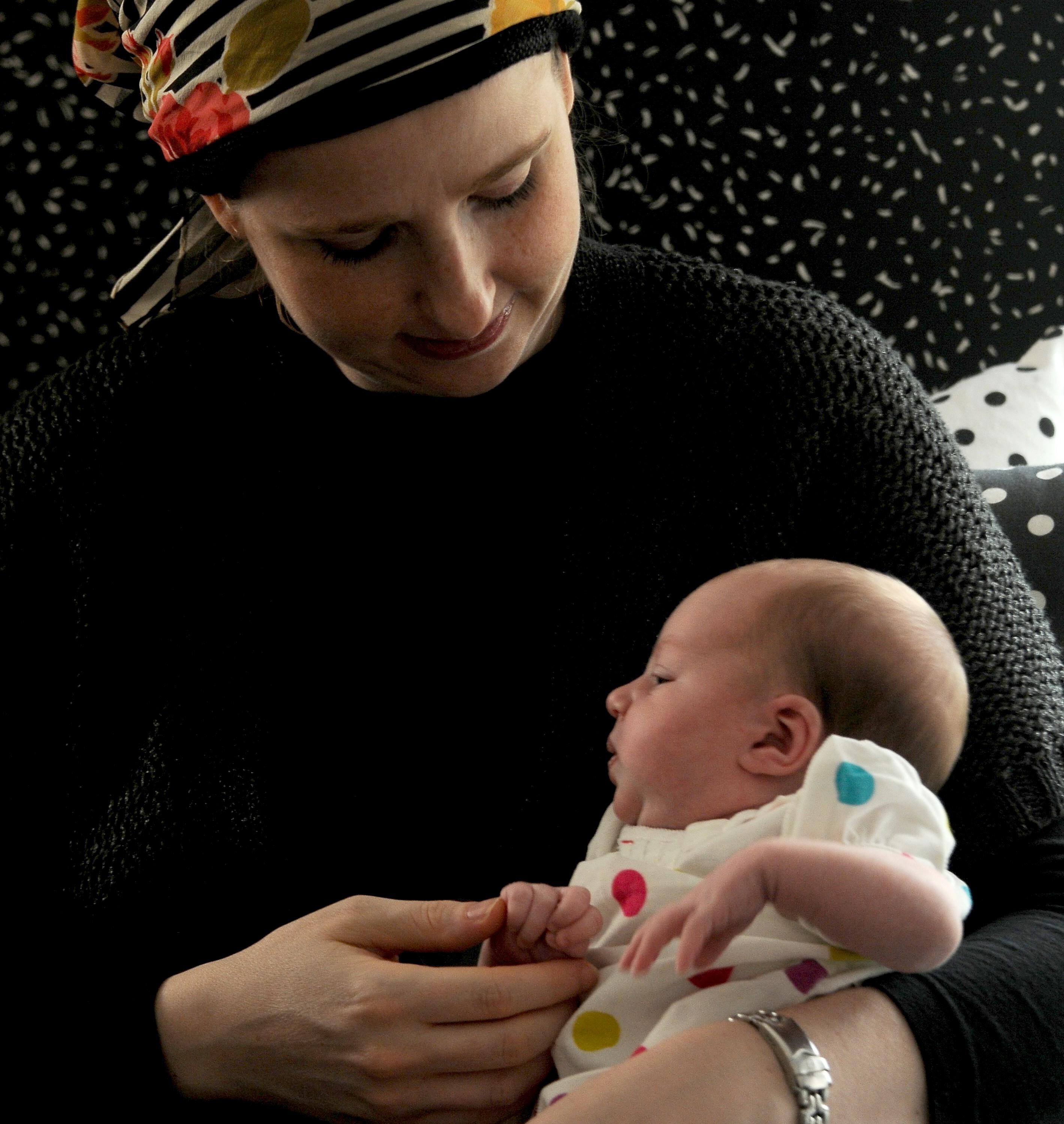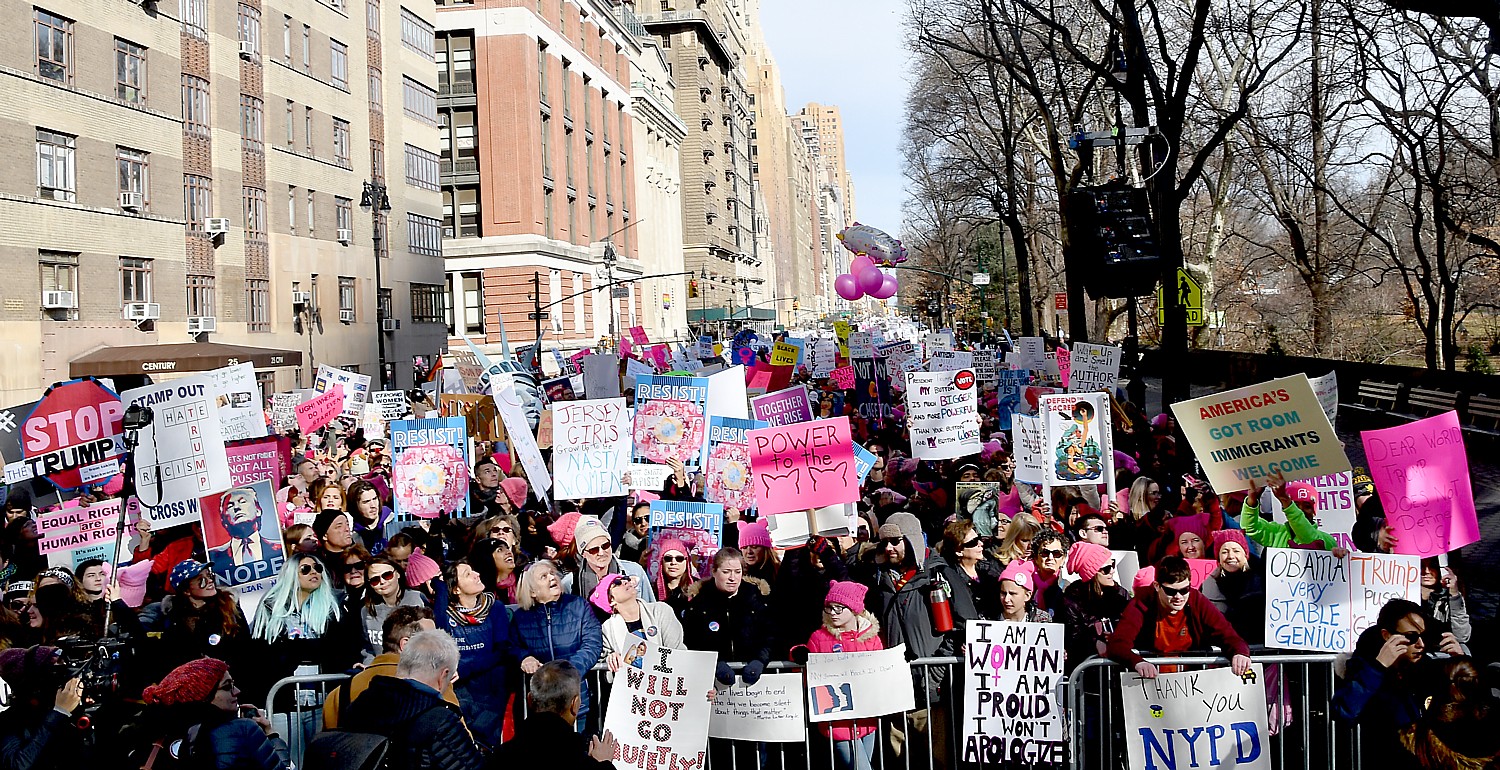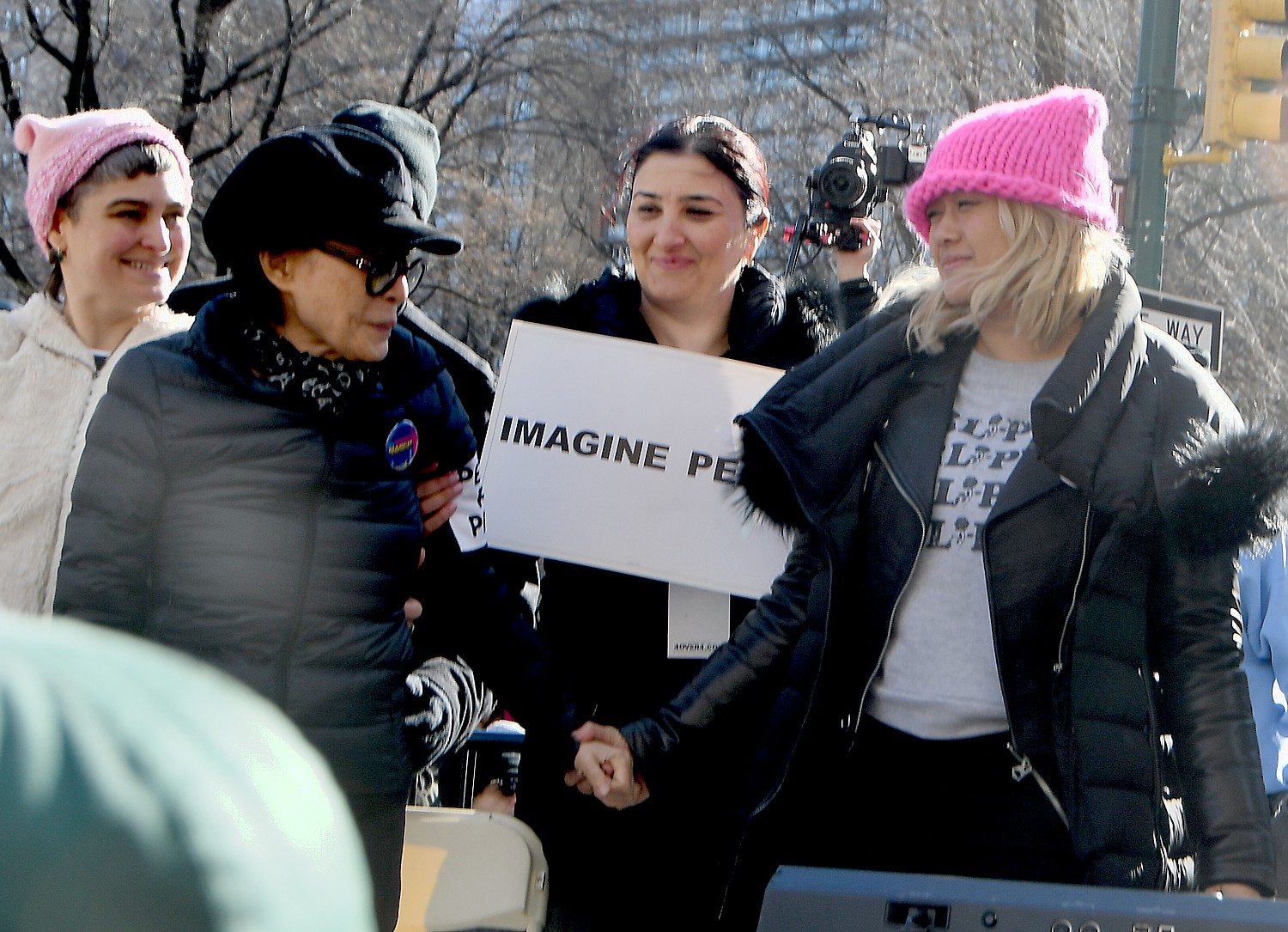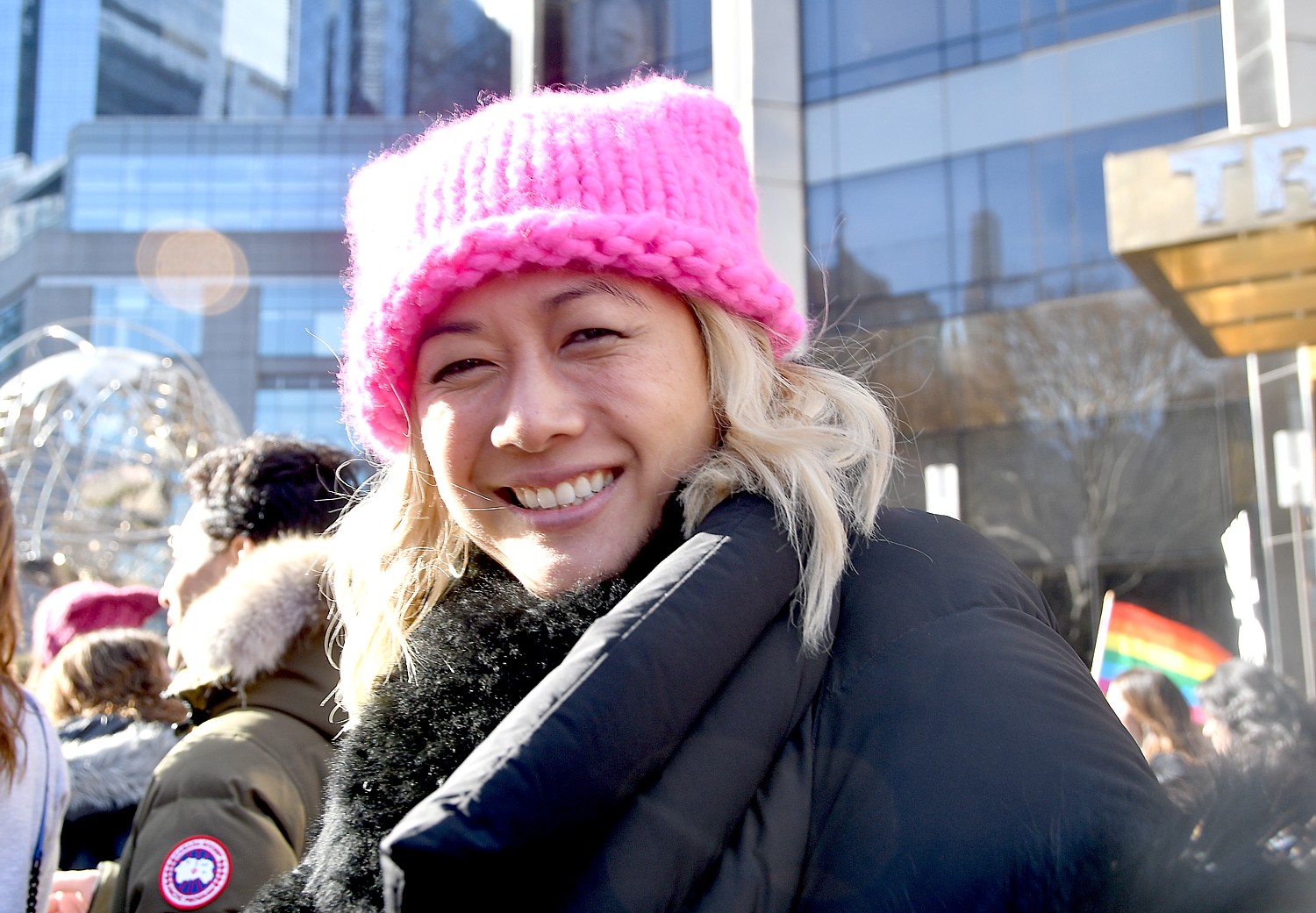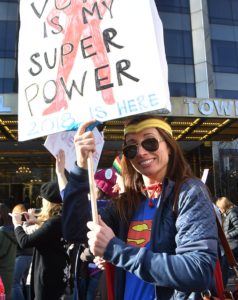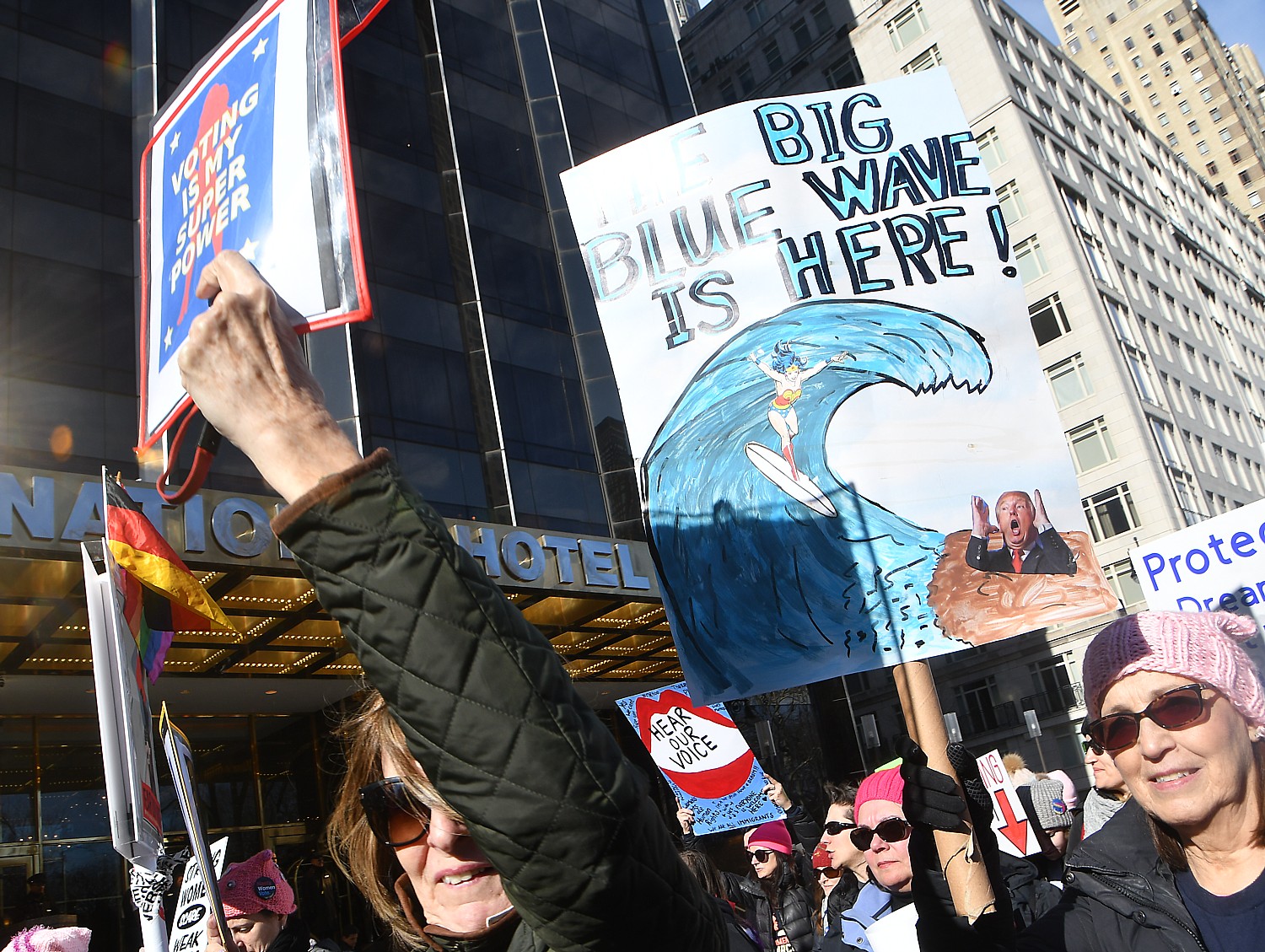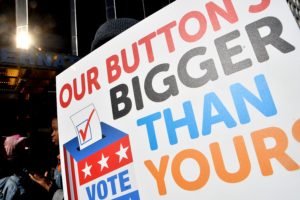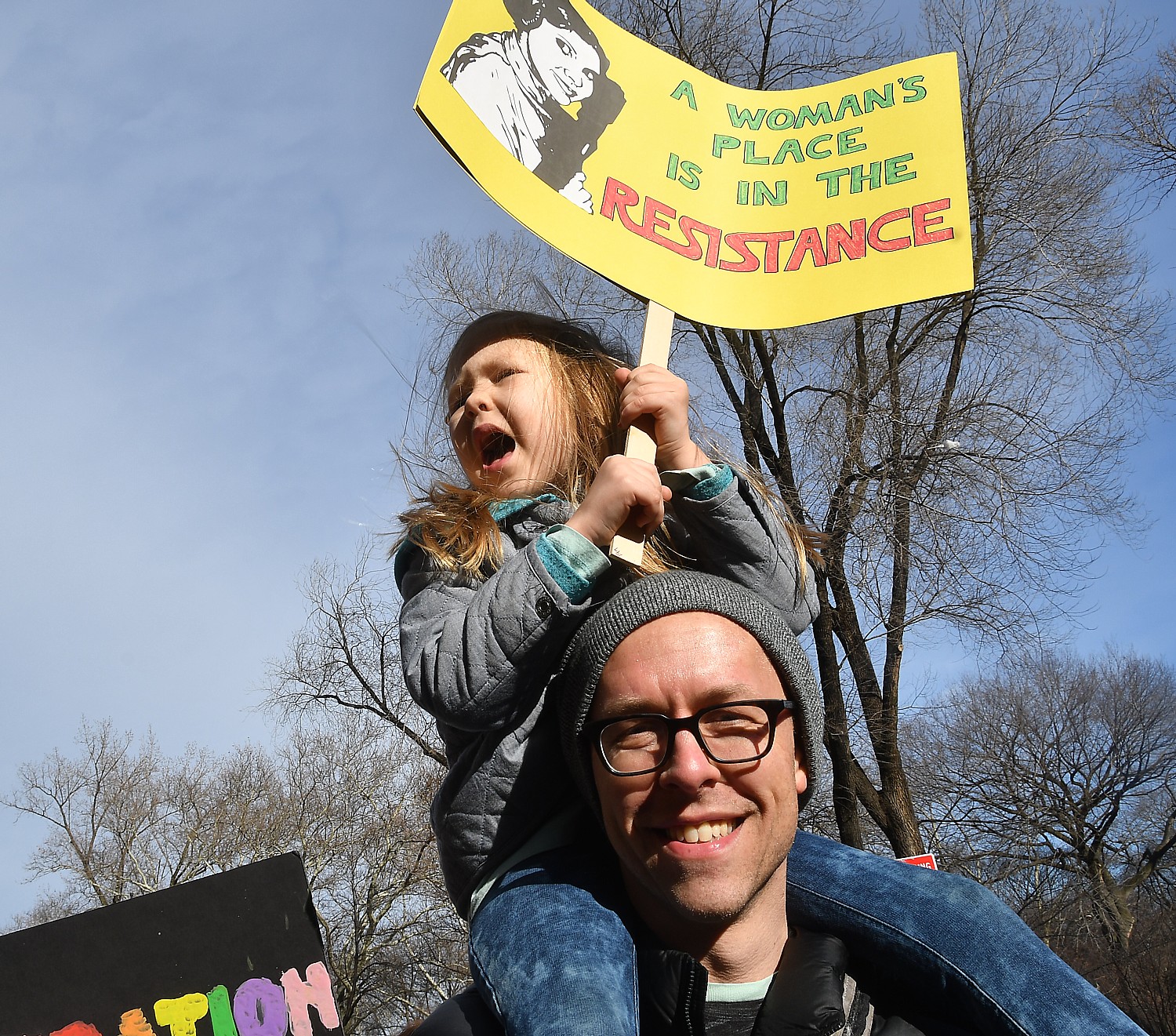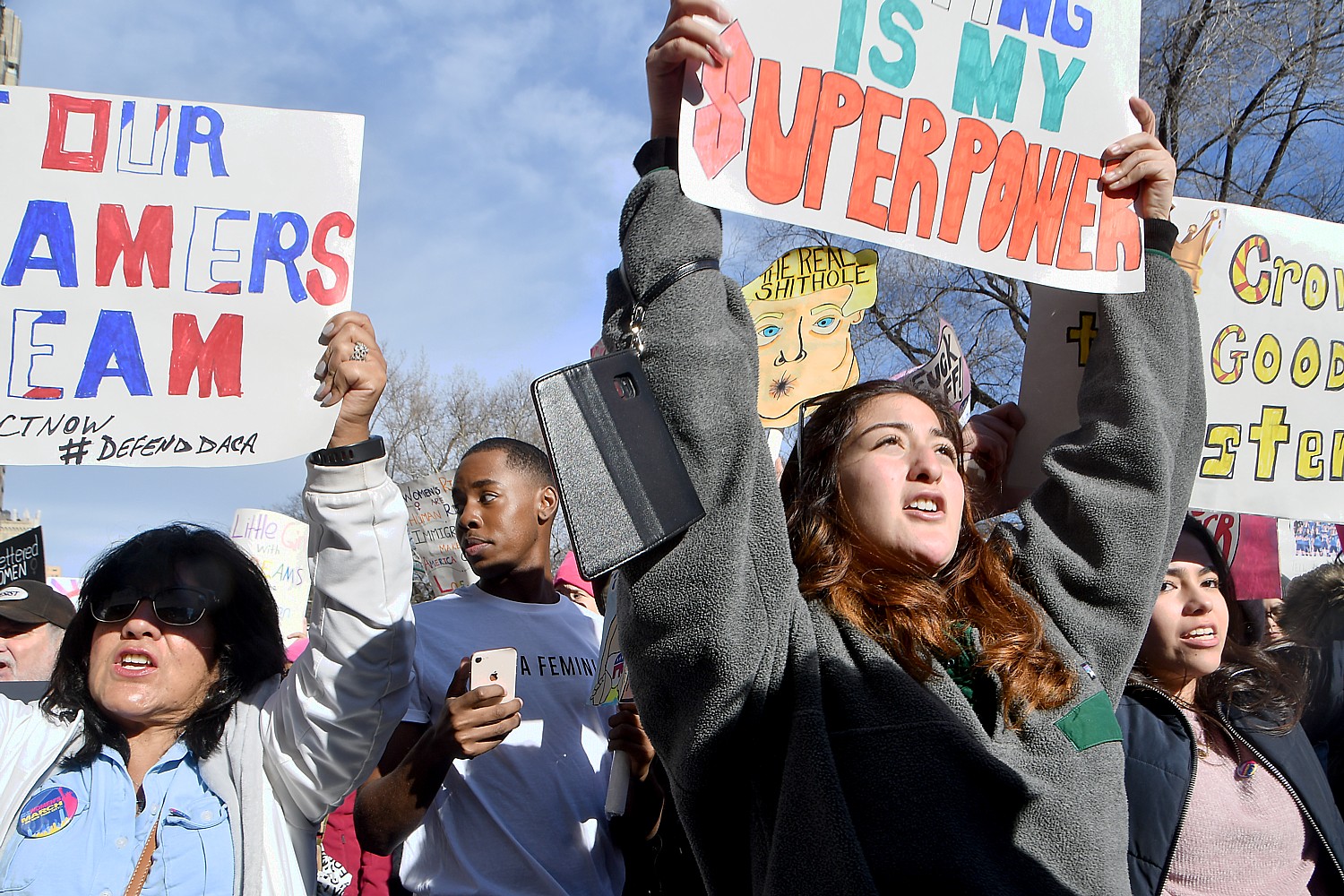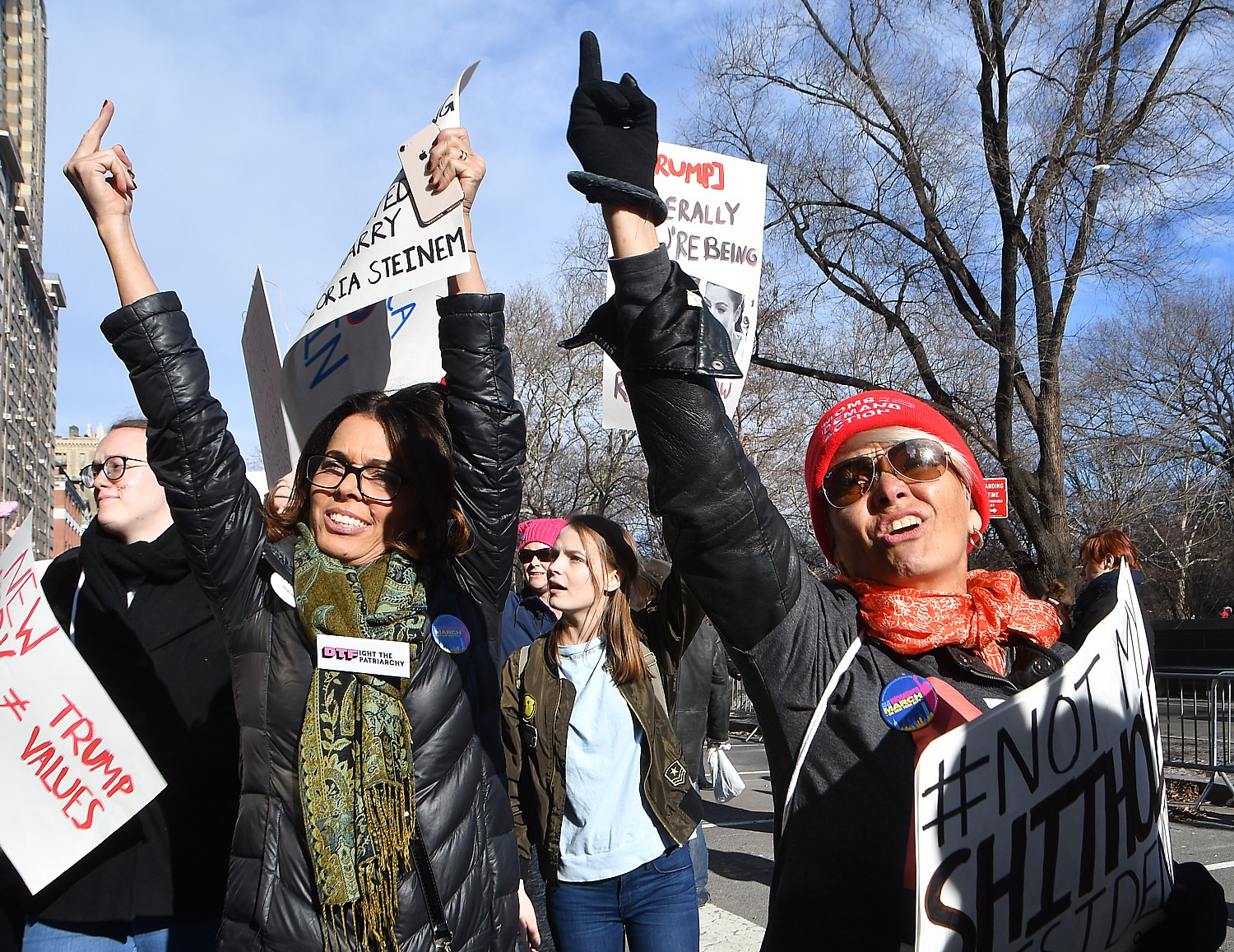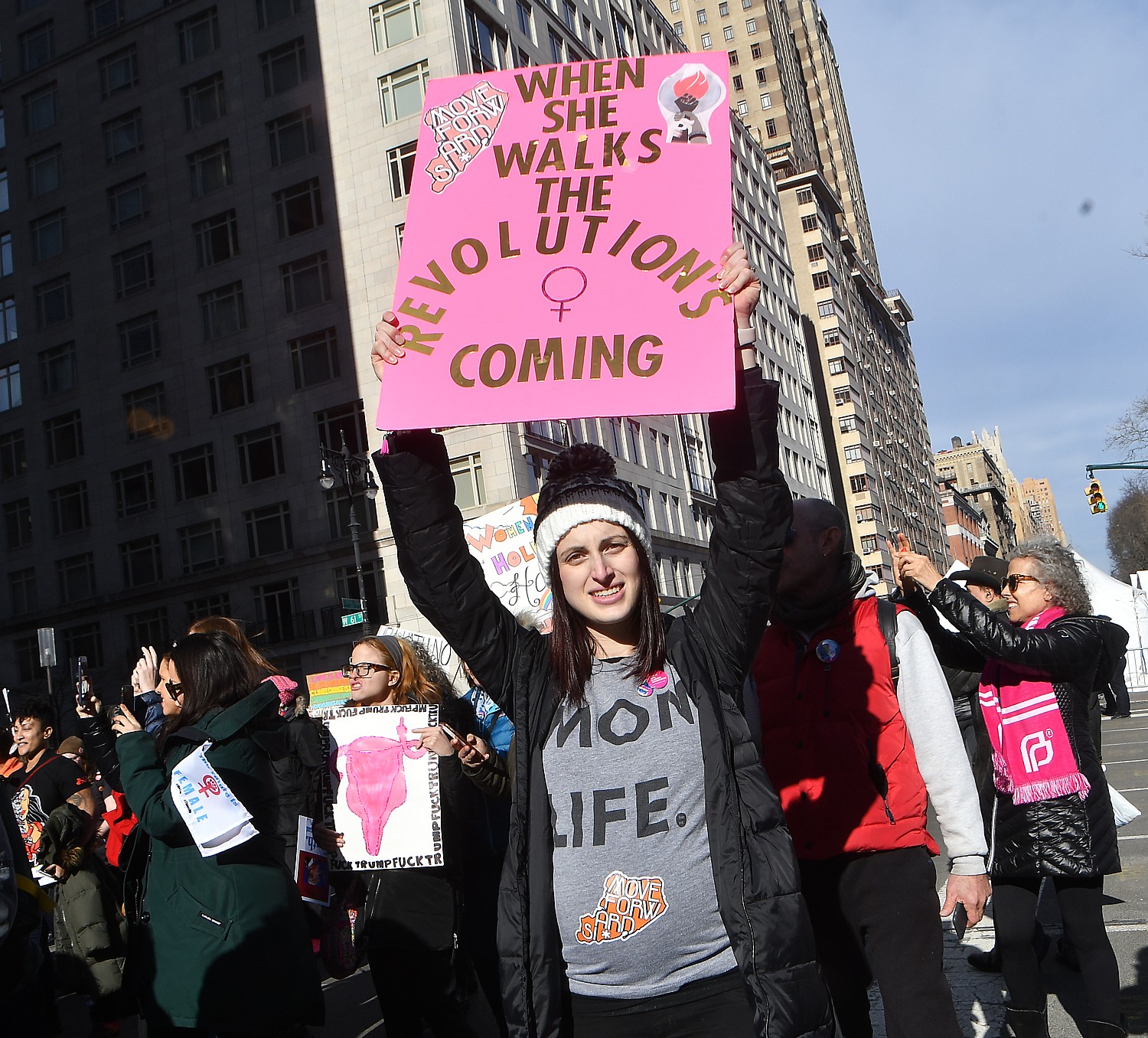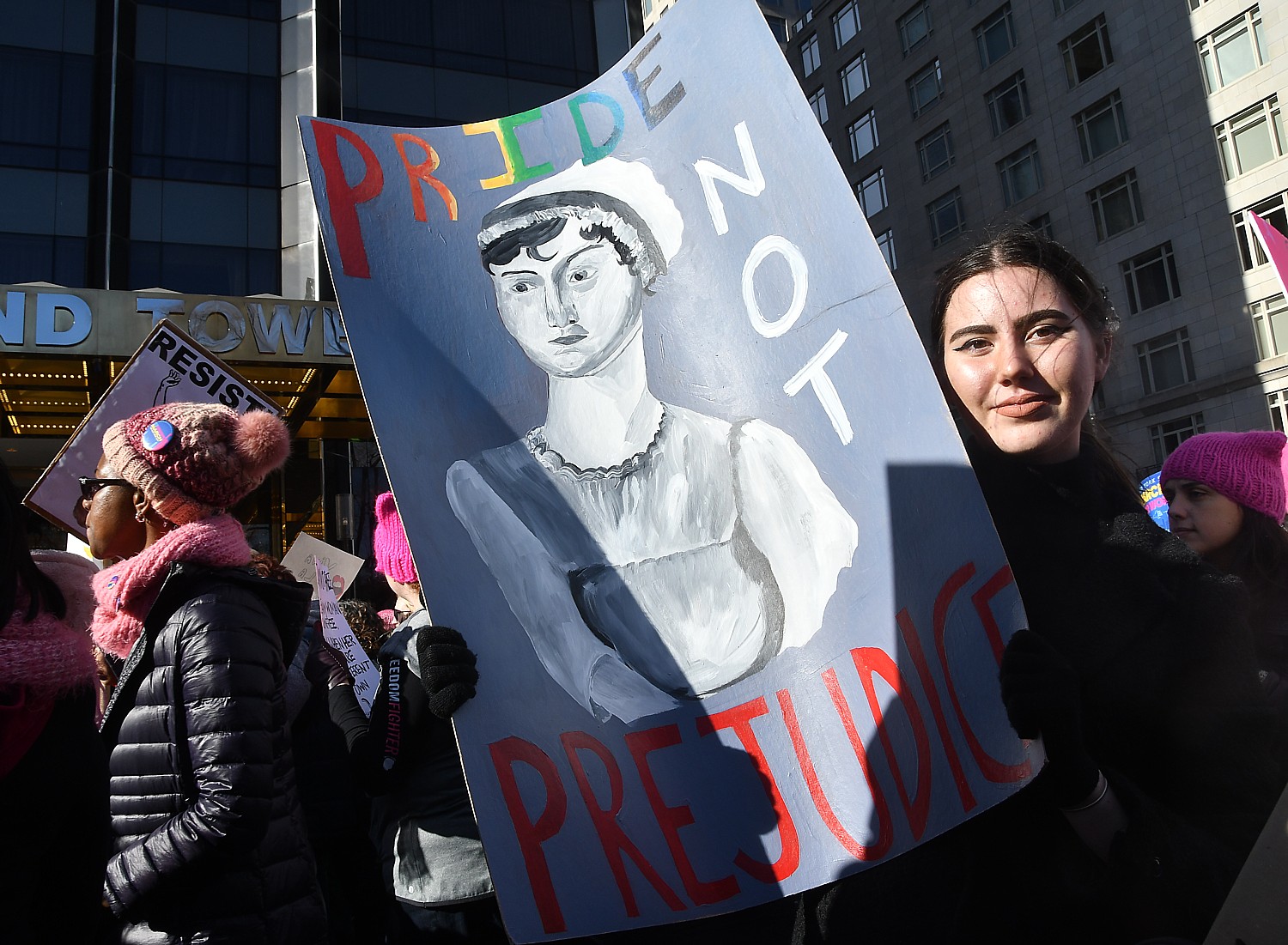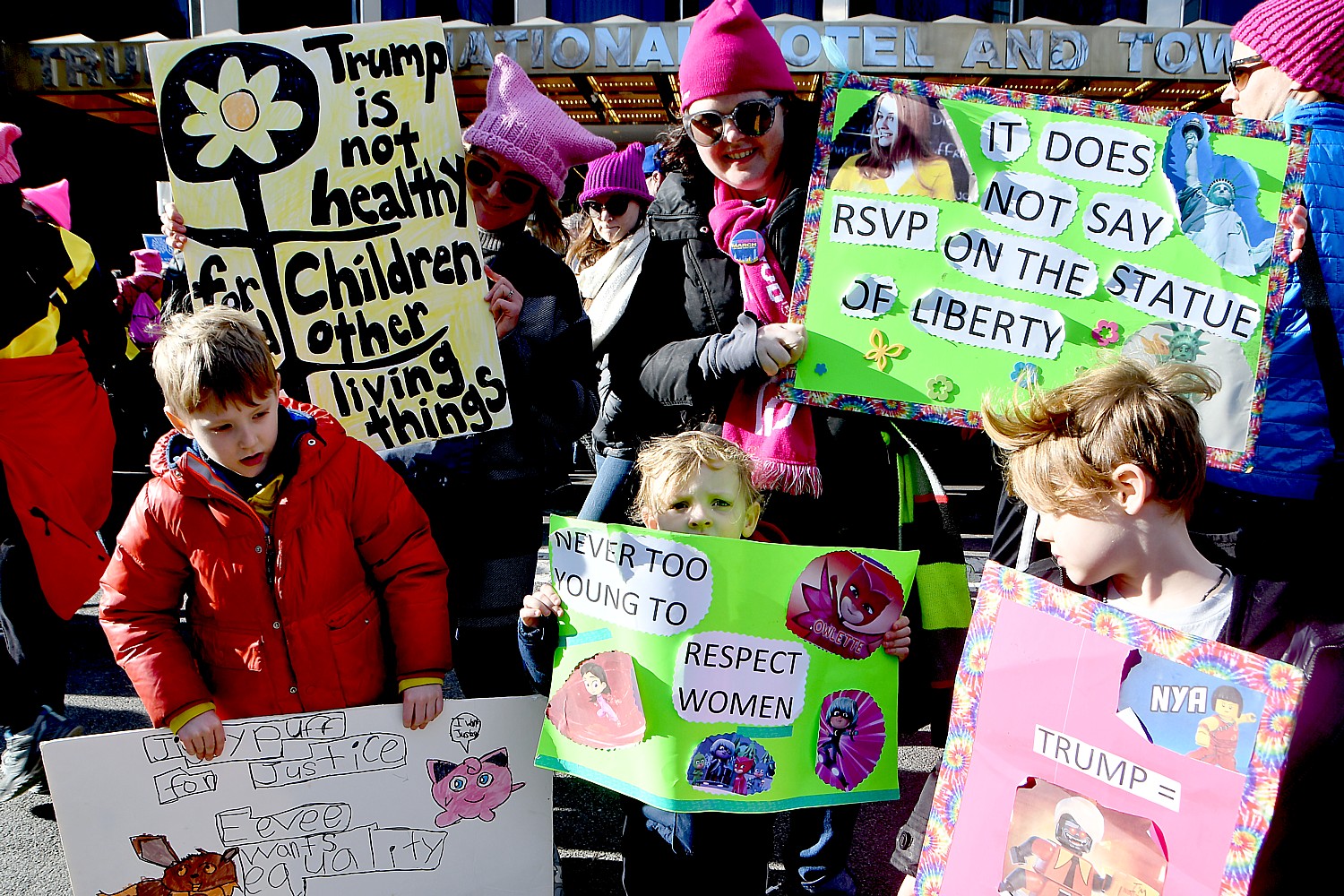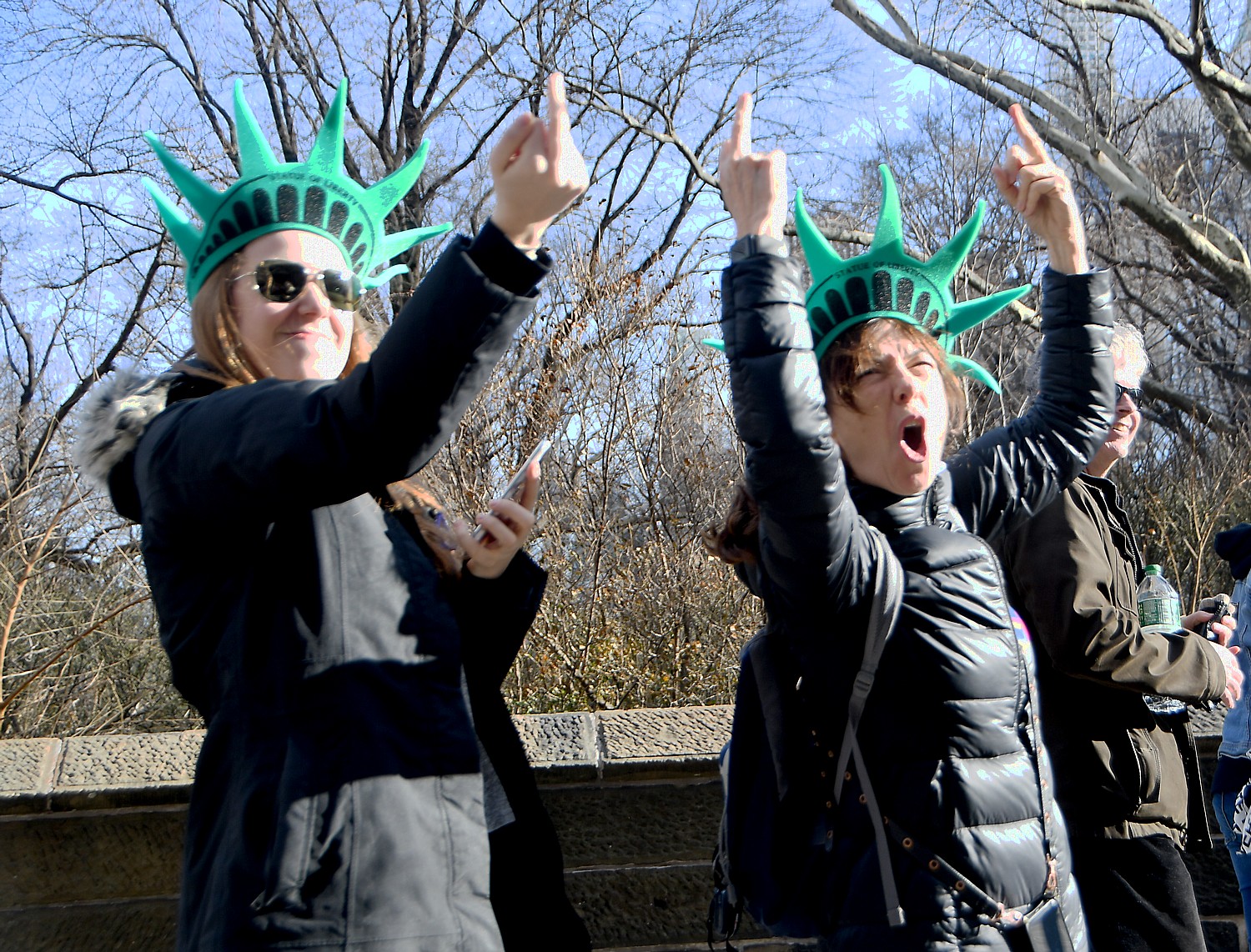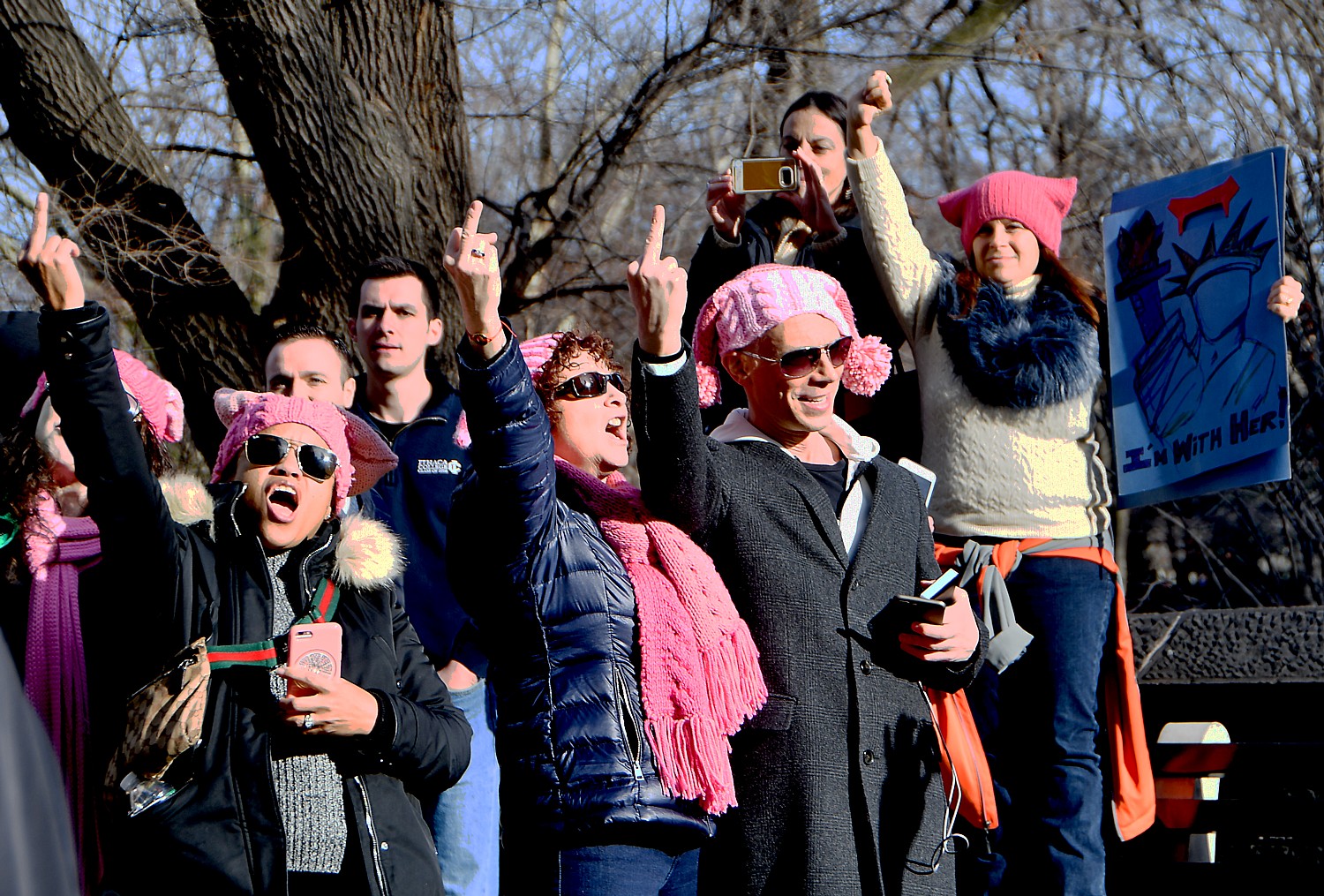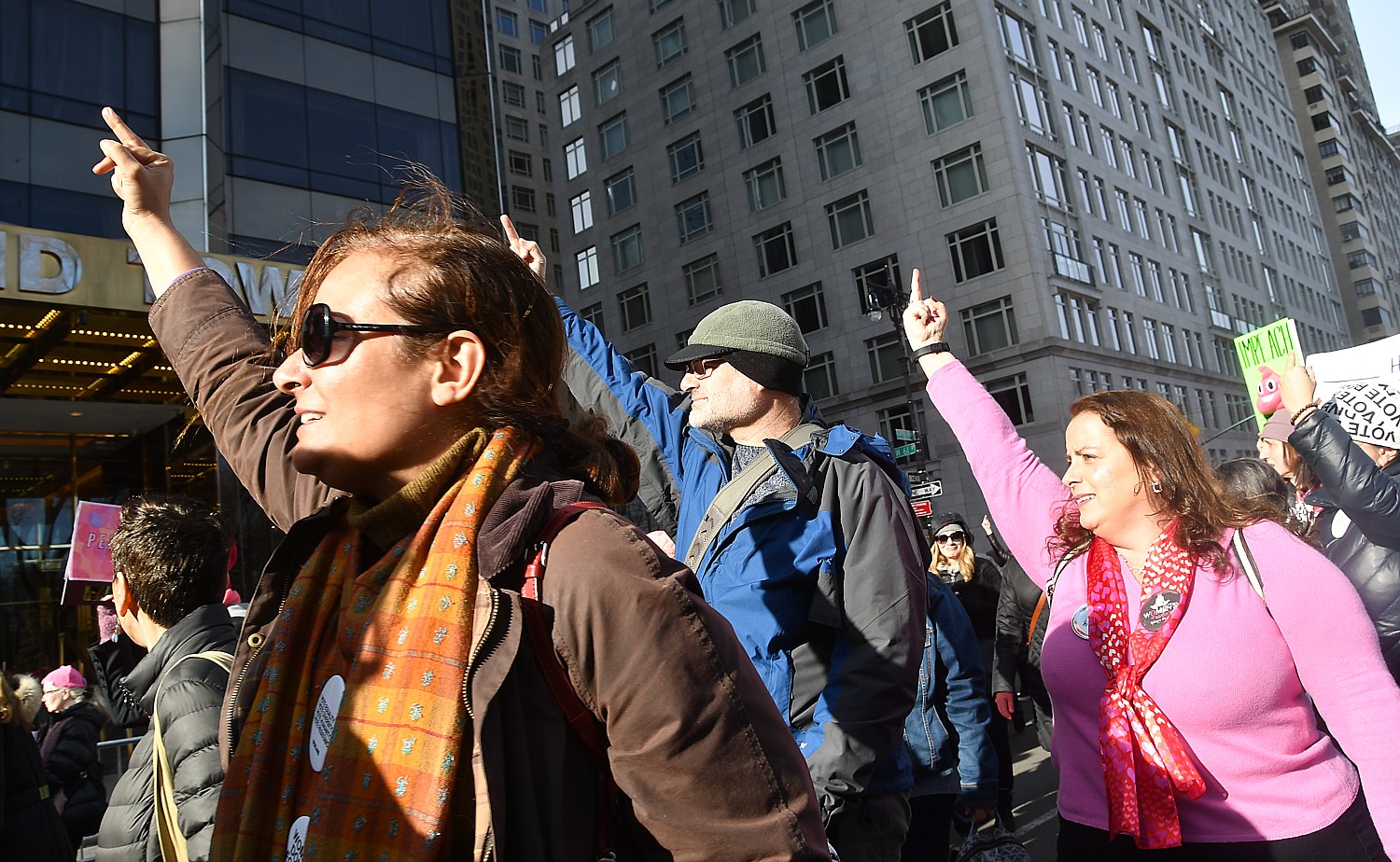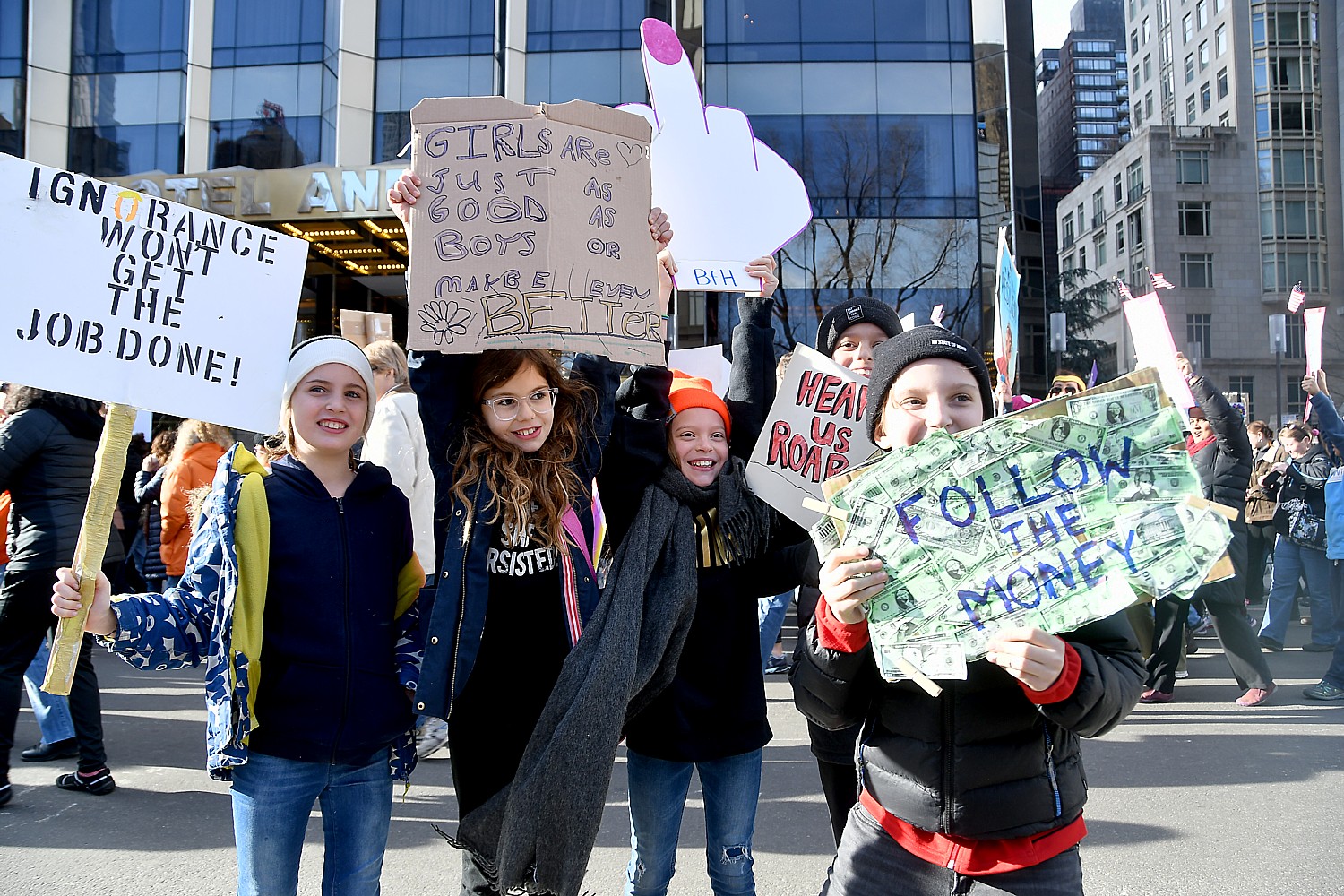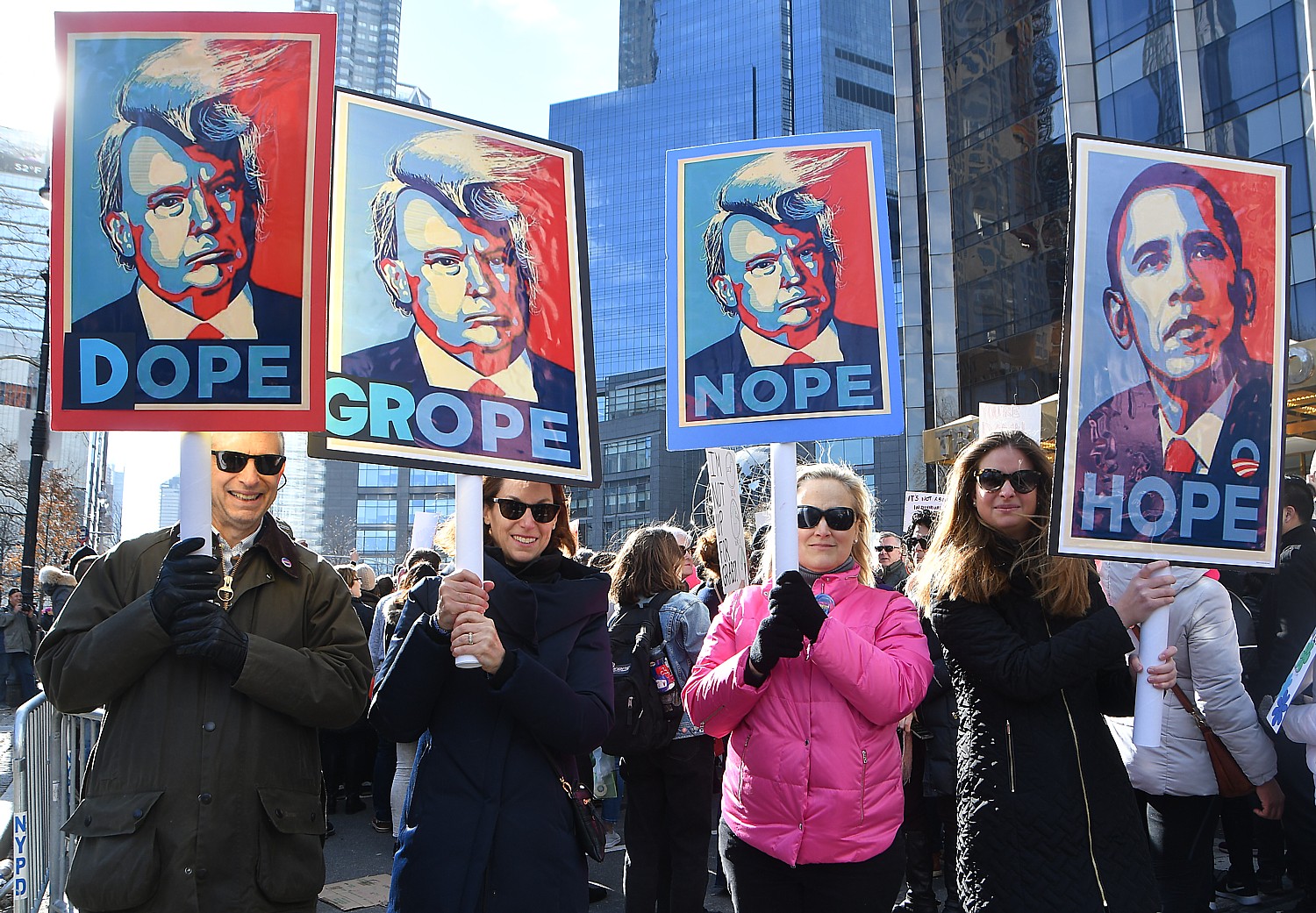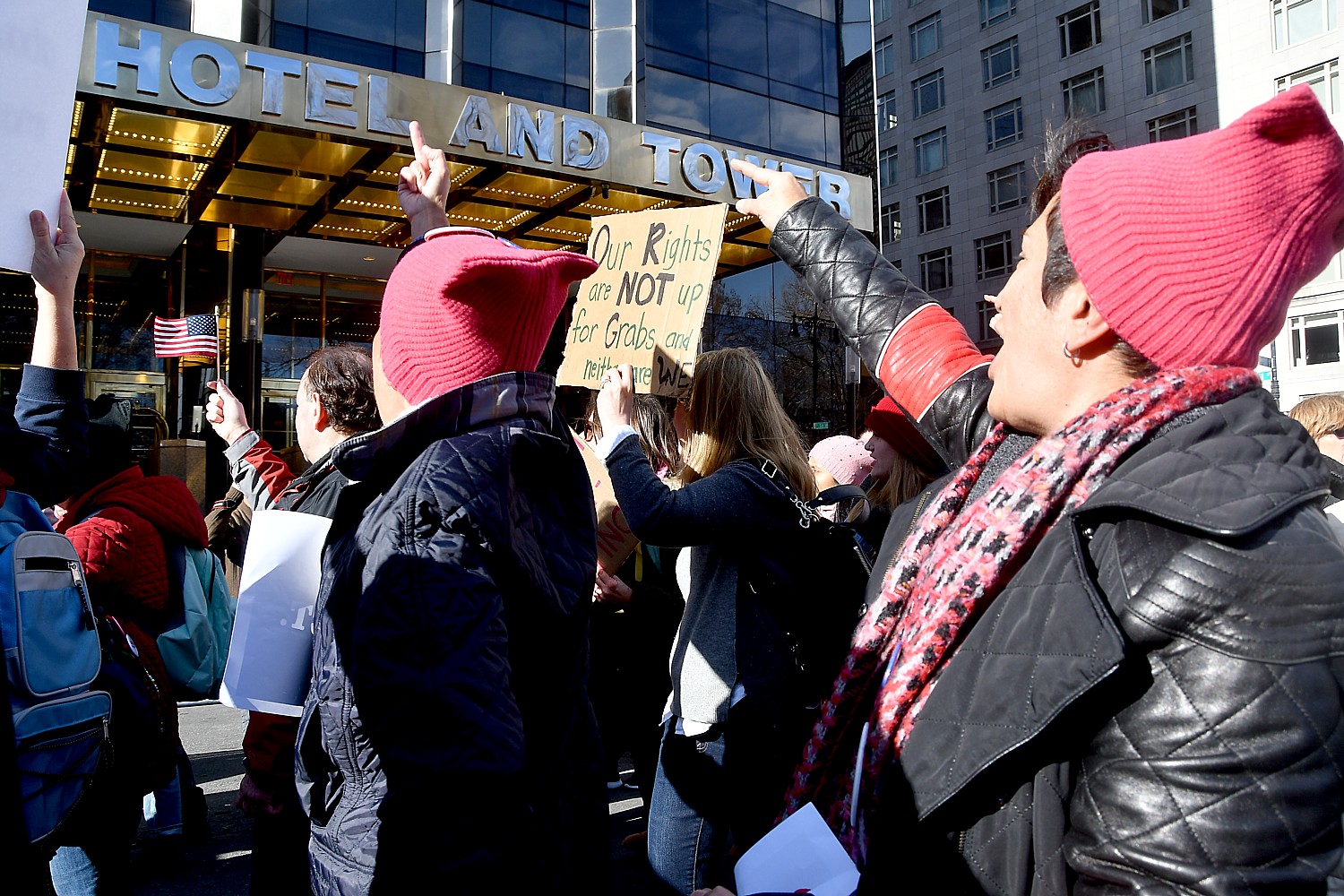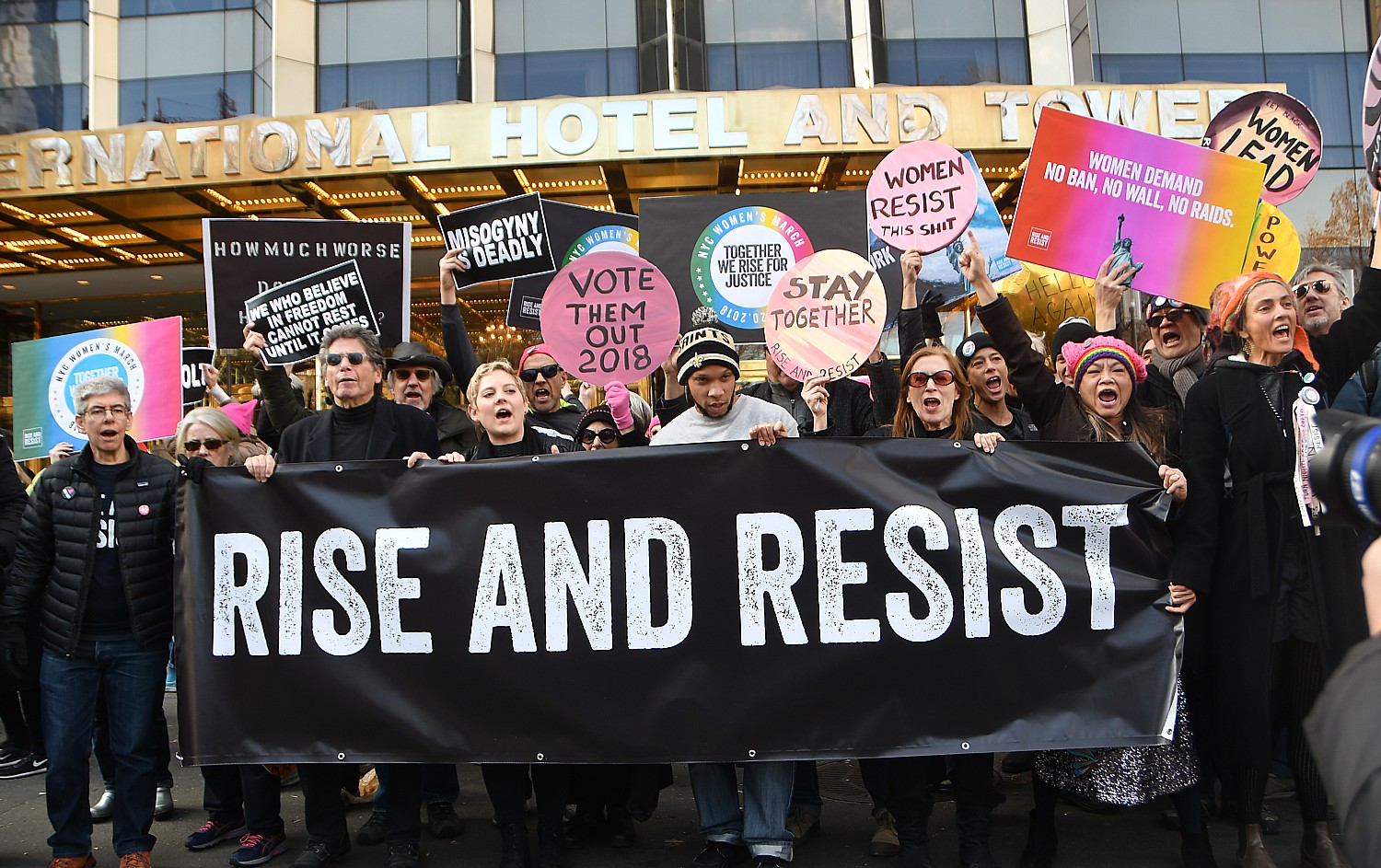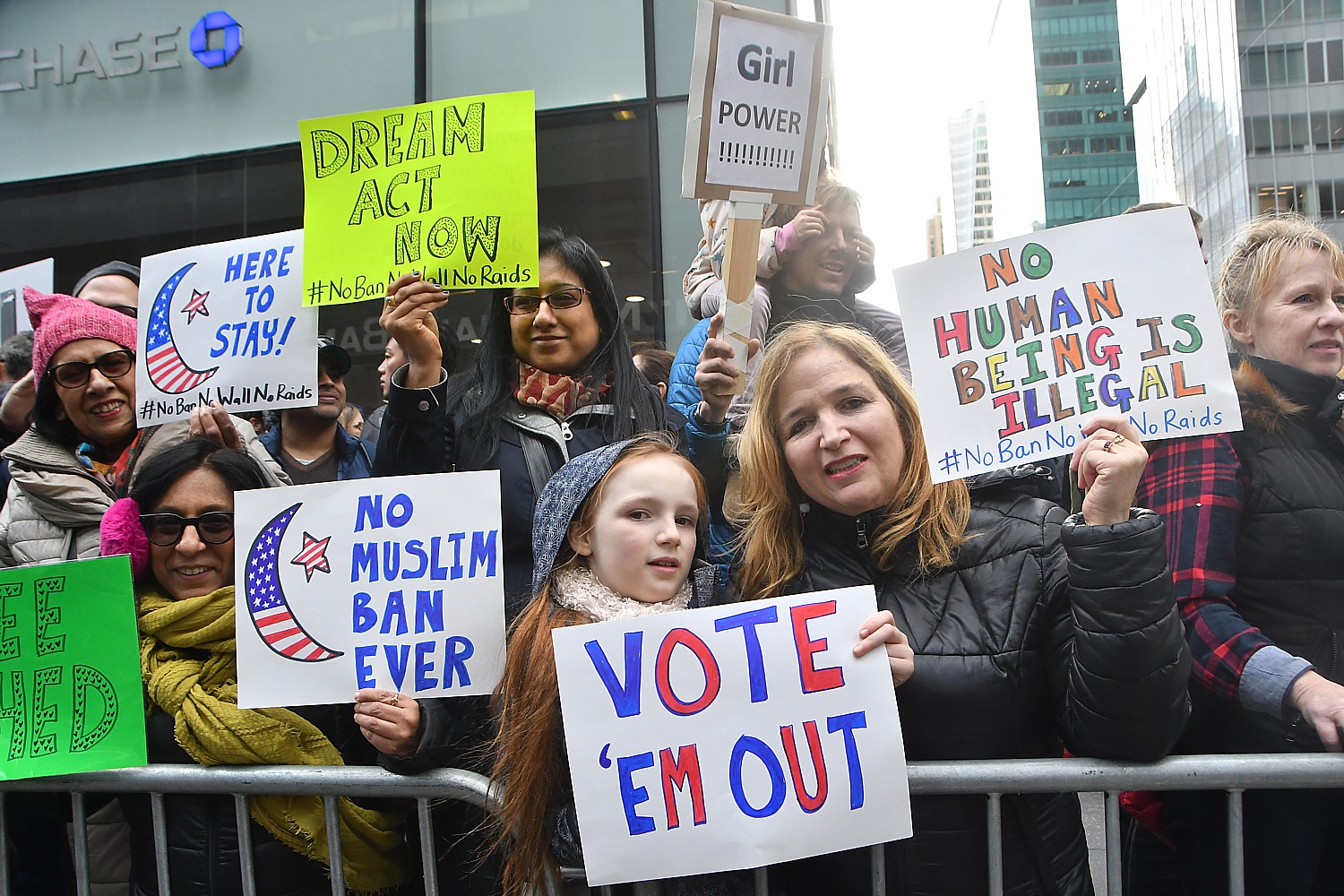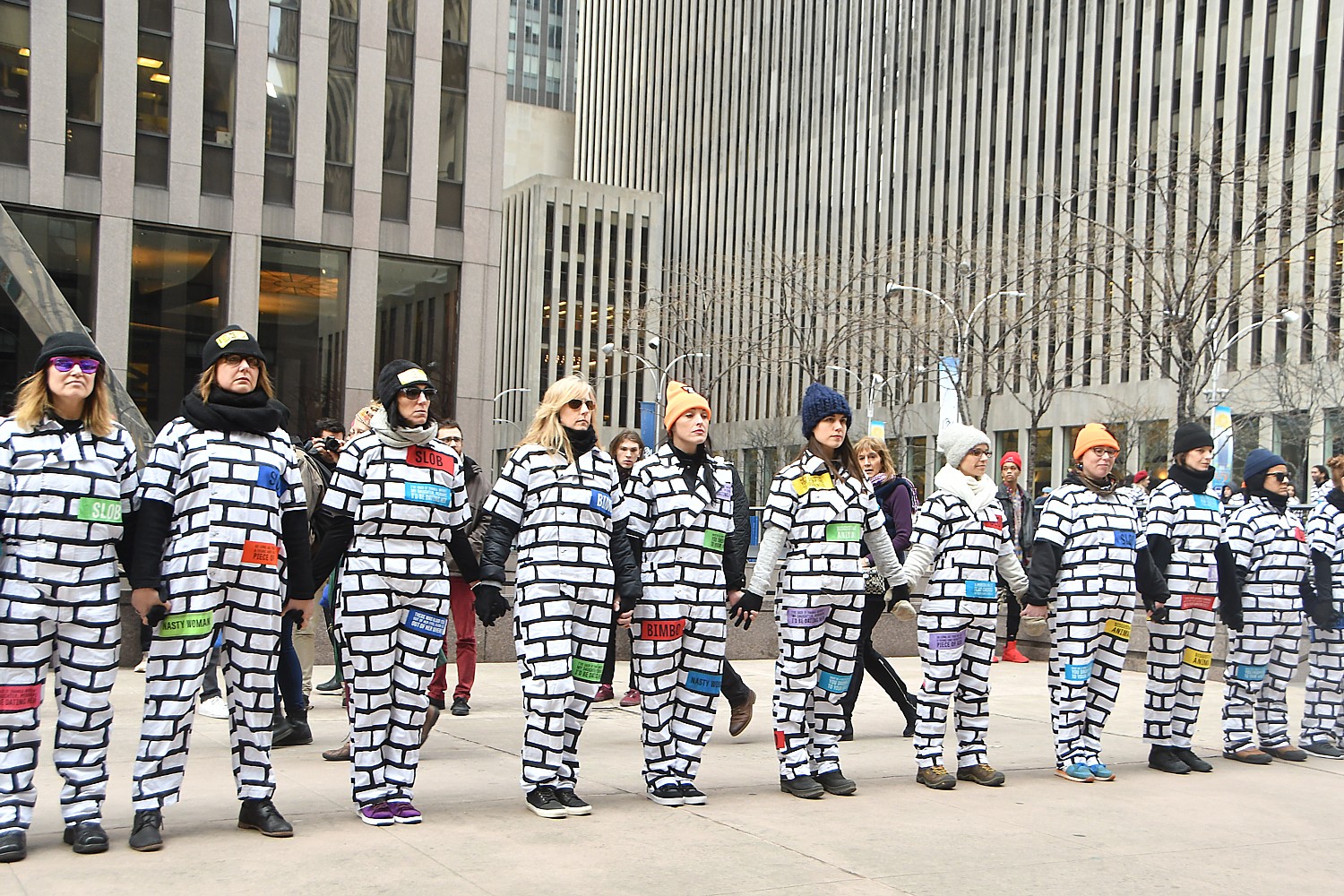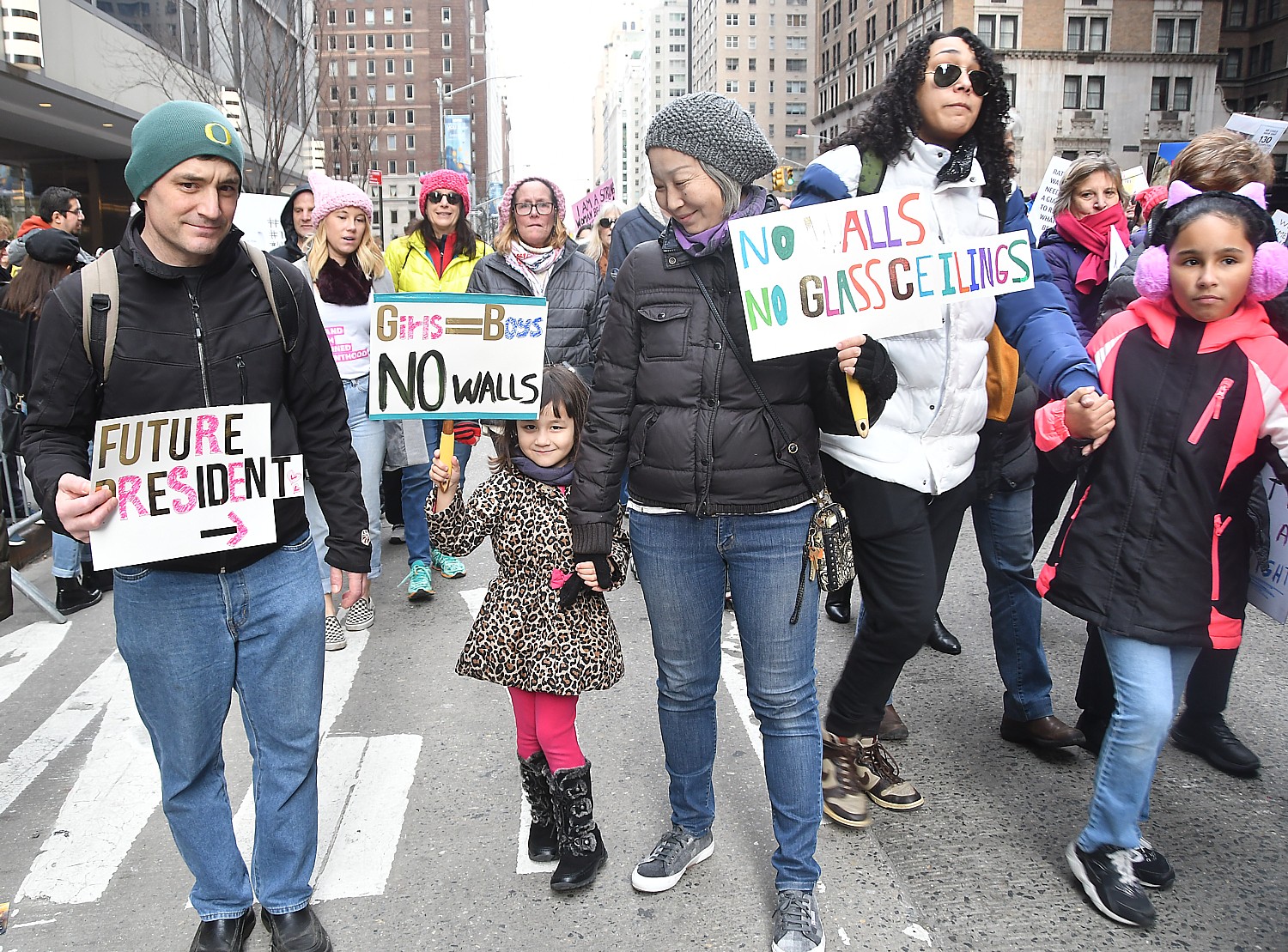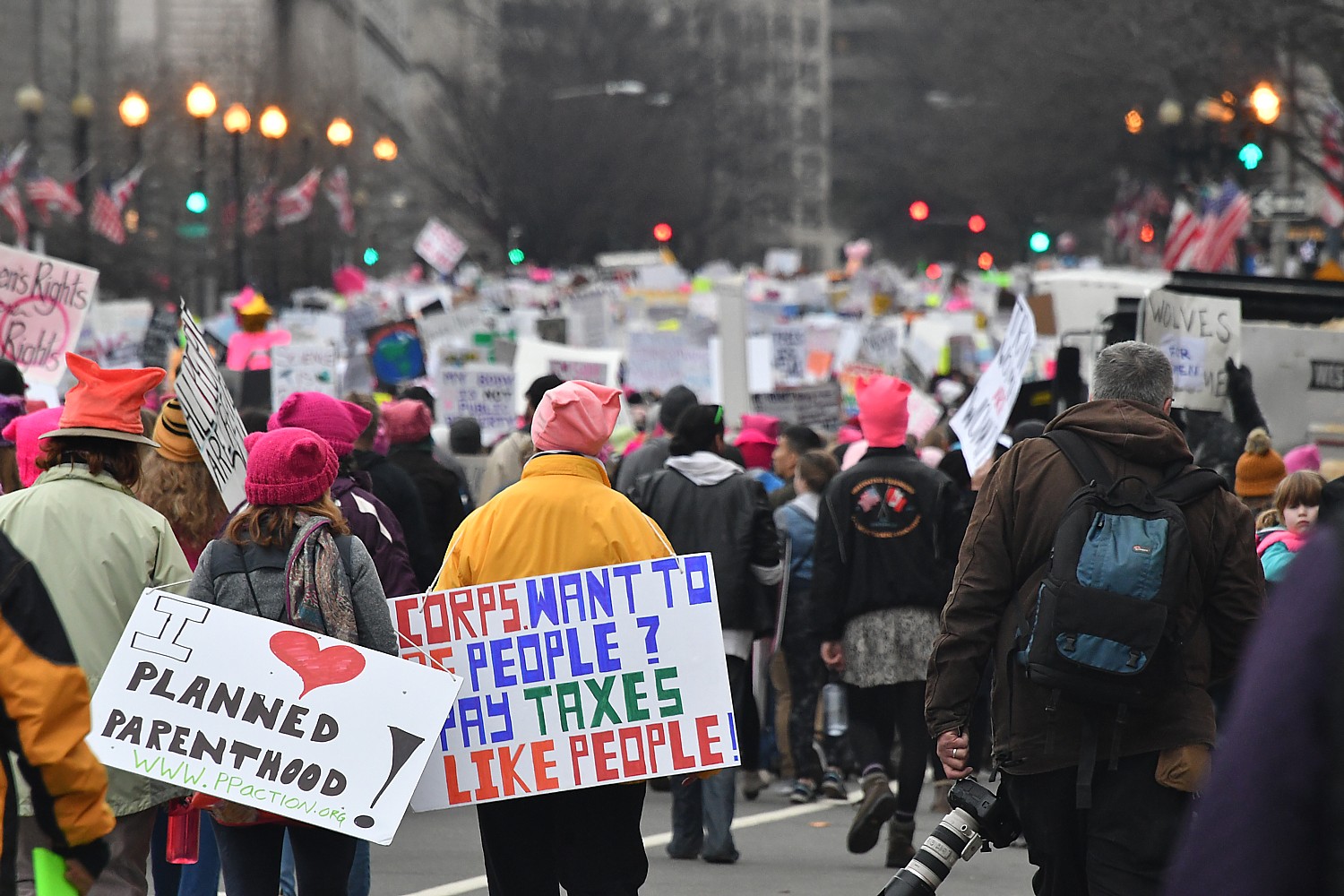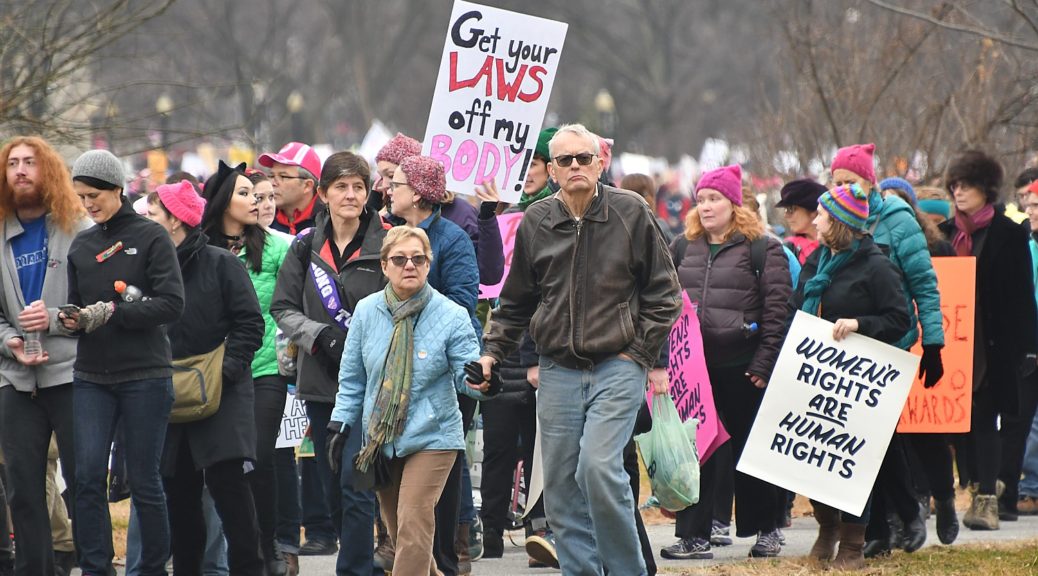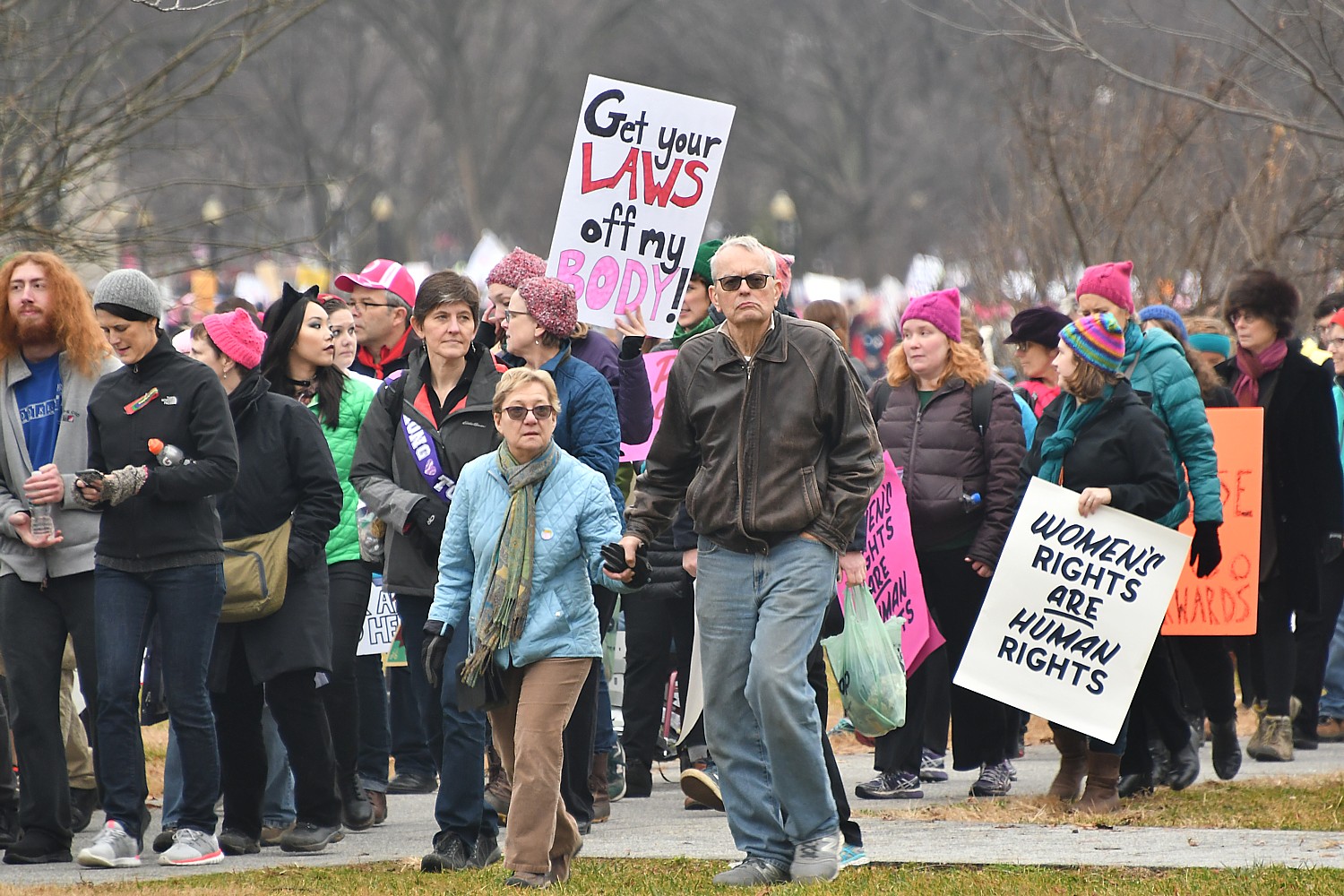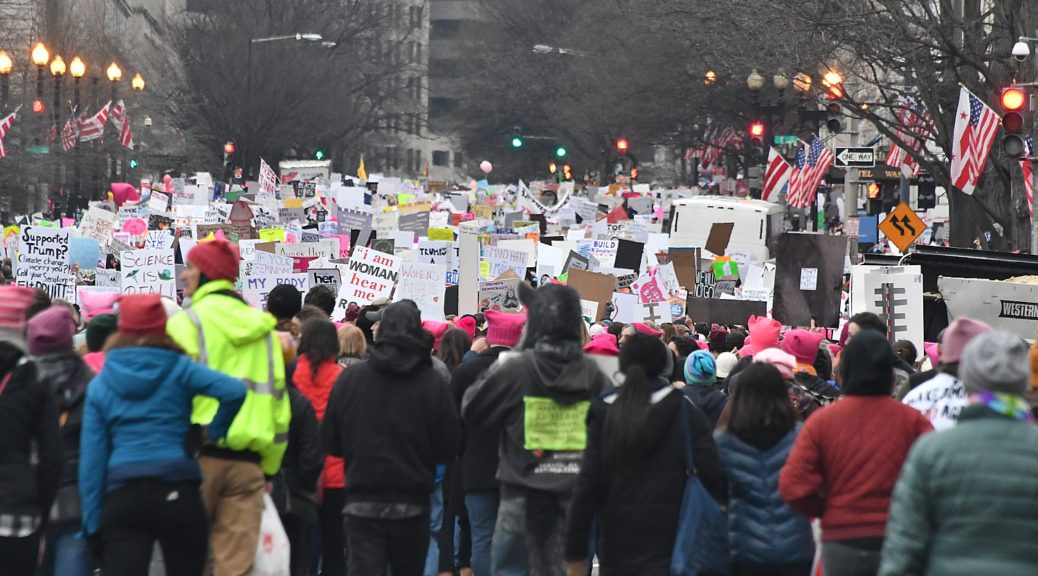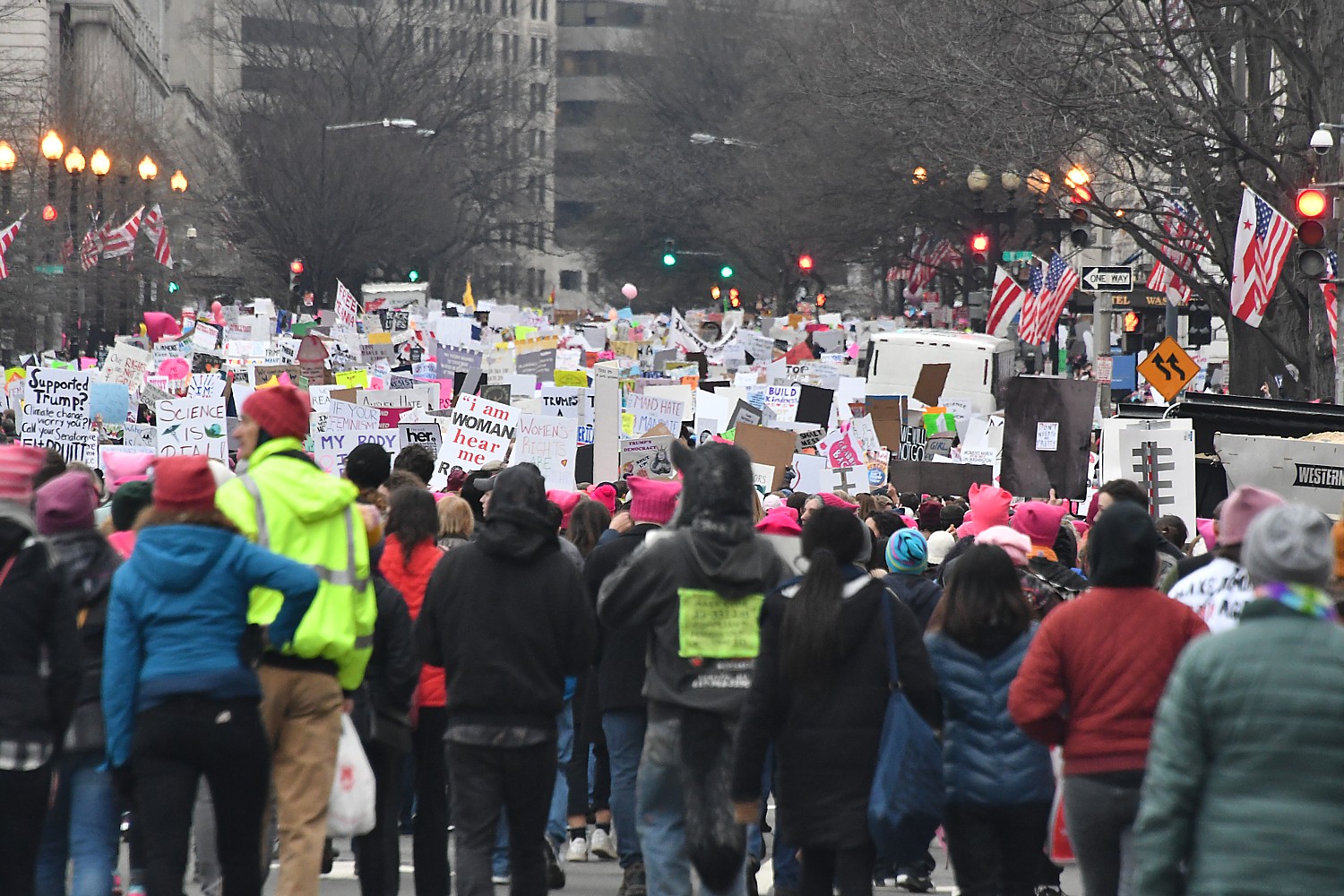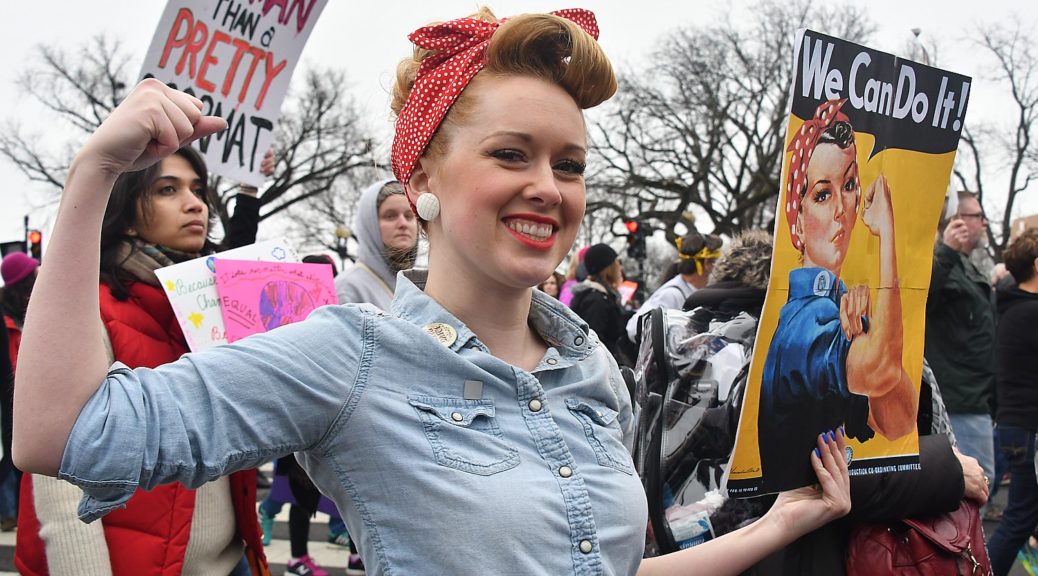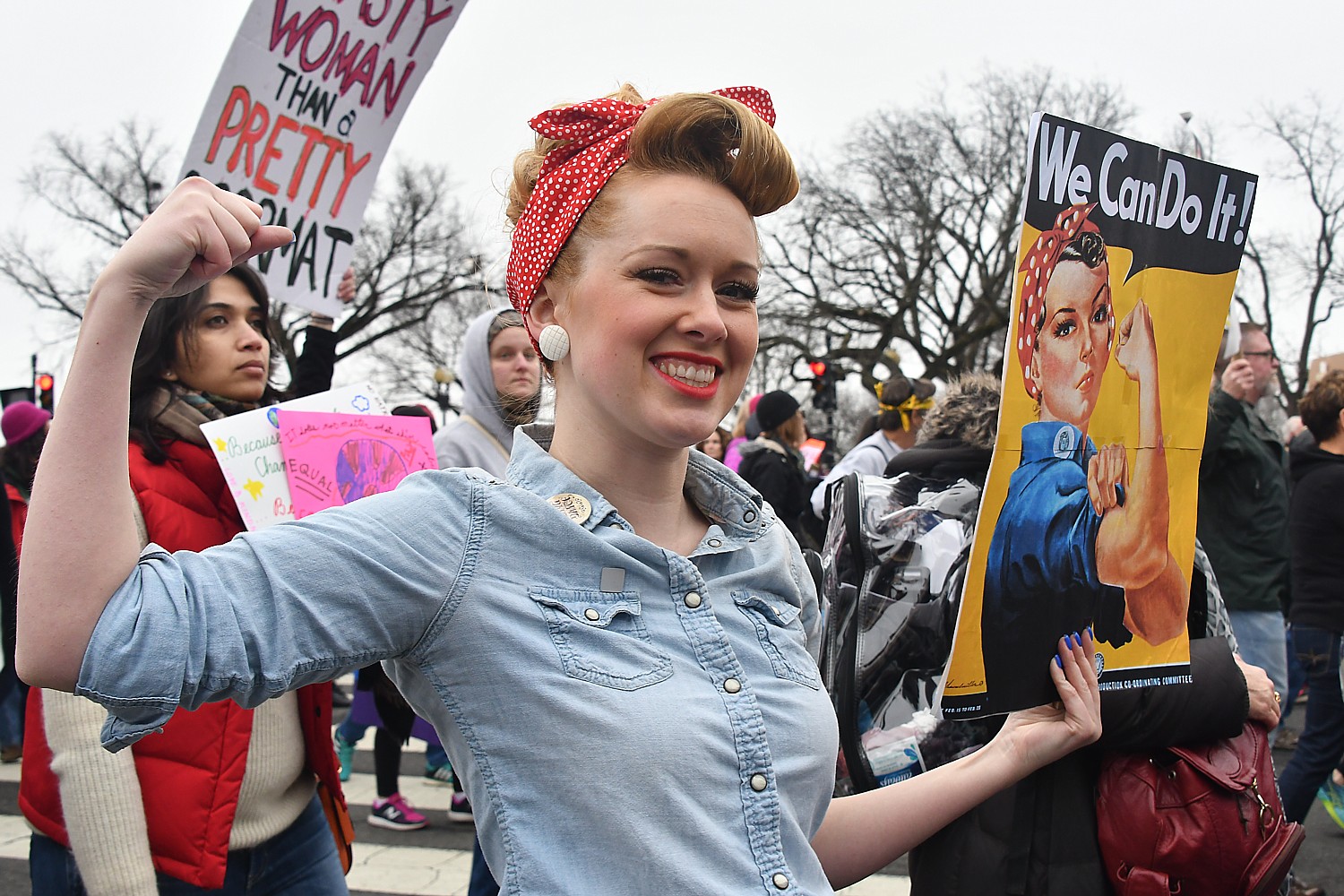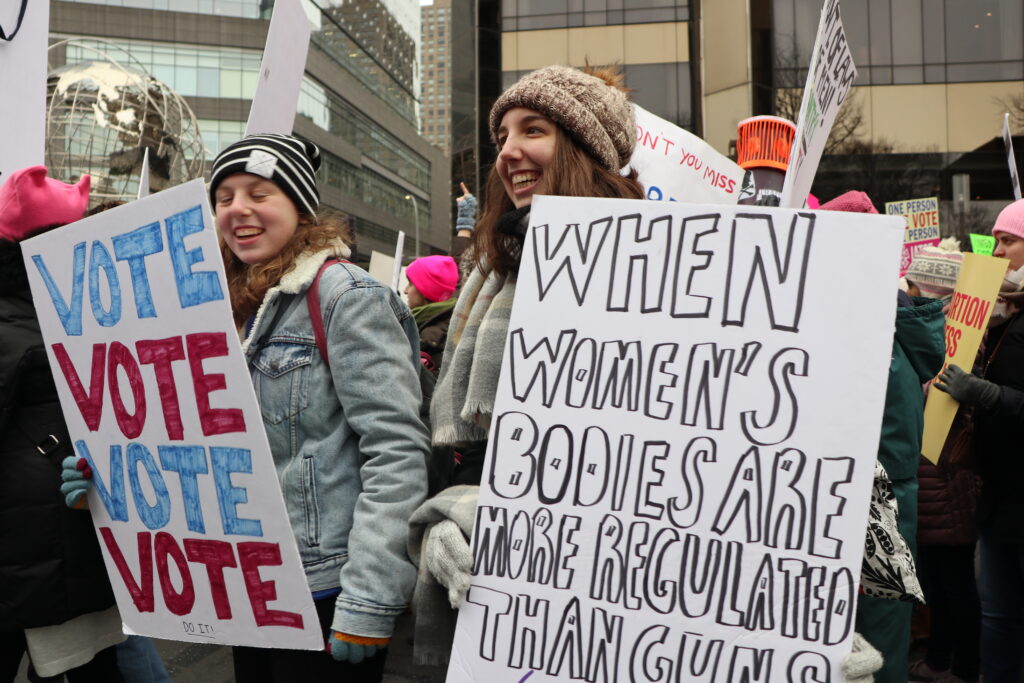
The “Women’s Agenda” has always been complex and complicated, going way beyond reproductive freedom and the rights to control one’s own body and therefore one’s own destiny. These basic rights are fundamental to all others, particularly women’s ability to fulfill their full potential and accumulate the economic and political resources they could. But Women’s Issues have always crossed over to a range of economic rights (income parity, gender discrimination, parental leave), legal rights to housing and property, gun violence prevention, domestic violence, climate justice, criminal justice, voting rights, health care , the list goes on and on.
Vice President Joe Biden, the presumptive Democratic candidate for president, understands the complexity, so has unveiled a detailed plan, an agenda, for how his administration would address all these categories.
He has won the endorsement of many women leaders, including Senator Elizabeth Warren, as well as scores of organizations.
In her endorsement, Ilyse Hogue, president of NARAL Pro-Choice America, stated: “The choice is clear: In his four years in the White House, Donald Trump has exhibited unprecedented cruelty and put lives and freedom on the line time and time again—and this November, we have the opportunity to elect Vice President Joe Biden, a deeply compassionate and thoughtful leader who knows that fighting for reproductive freedom for every body is part and parcel of a just society. NARAL Pro-Choice America and our 2.5 million members are committed to powering Vice President Biden to victory this November and working with his administration to protect and expand access to abortion care and birth control. Joe Biden will stand for freedom over Donald Trump’s desire to control women. He will put a stop to Trump’s dangerous anti-choice political agenda when so much hangs in the balance. As we continue to face a public health crisis, a national reckoning with entrenched white supremacy, and attacks on reproductive freedom, another four years under Trump would be devastating—to our rights, our families, and our democracy. Vice President Biden will lead our nation forward with dignity and vision at a time when our freedoms are under unprecedented assault.”
This extremely detailed agenda is from the Biden campaign:
Joe Biden is going to build our country back better after this economic crisis and that includes ensuring we get closer to full inclusion of and equality for women. Women — particularly women of color — have never had a fair shot to get ahead in this country. Today, too many women are struggling to make ends meet and support their families, and are worried about the economic future for their children. This was true before the COVID-19 crisis, but the current global health crisis has exacerbated these realities for women.
For Biden, it’s a simple proposition: his daughter is entitled to the same rights and opportunities as his sons. He believes every issue is a women’s issue — health care, the economy, education, national security — but women are also uniquely and disproportionately impacted by many policies. As President, Biden will pursue an aggressive and comprehensive plan to further women’s economic and physical security and ensure that women can fully exercise their civil rights. Biden will:
- Improve economic security. Biden will start by fighting for equal pay, investing in women-owned small businesses, expanding access to education and training, and strengthening pay and benefits in careers disproportionately filled by women.
- Expand access to health care and tackle health inequities. Biden will expand access to high-quality, affordable health care for all women.
- Help women navigate work and families. Biden will expand access to affordable child care and care for older Americans and people with disabilities, and provide paid leave and other important workplace benefits and protections.
- End violence against women. Biden will work to end violence against women, continuing his leadership on this issue since he authored the Violence Against Women Act in 1994.
- Protect and empower women around the world.
Biden will start on day one of his Administration leading by example, making sure his political appointees, including his Cabinet, and our entire federal workforce look like the country they serve. Biden has committed to selecting a woman to be his Vice President and an African American woman to be his first nominee to the U.S. Supreme Court, but his commitment to ensuring women help lead his Administration does not end there. As President, Biden will nominate and appoint people who look like the country they serve. He will reissue and mandate strict compliance with the Obama-Biden executive order to promote diversity and inclusion in the federal workforce, which President Trump has ignored. He will modify it to mandate that Cabinet agencies and other executive branch agencies work with federal employee unions to create and implement a diversity and inclusion plan for the federal workforce. And, he will provide more training and mentoring opportunities to improve retention, and collect better data about who is applying for federal service positions as well as being promoted.
Biden will also structure his Administration to ensure women’s issues remain at the forefront of policy efforts. Biden knows that addressing the challenges faced by women and girls is more than just a campaign promise — it’s an imperative if the Administration is going to succeed in its broader efforts to make sure the government and economy work for all Americans. Biden will ensure that his administration aggressively protects the rights and addresses the unique needs of all women, including Black women, Latina women, Native women, Asian American and Pacific Islander women, women with disabilities, and lesbian, bisexual, transgender, and queer women. The Obama-Biden Administration created the White House Council on Women and Girls to make sure the federal government was doing its best to tackle issues like equal pay, paid family leave, and poverty in an effective manner. The Trump Administration then disbanded it and put nothing in its place. Biden will create a White House Council on Gender Equality, chaired by a senior member of the Executive Office of the President tasked solely with guiding and coordinating government policy that impacts women and girls, such as economic policy, health care, racial justice, gender-based violence, and foreign policy.
As President, Biden will work with advocates across the country to pass the Equal Rights Amendment (ERA) so women’s rights are once and for all explicitly enshrined in our Constitution. Biden co-sponsored the ERA nine times. As President, he will work with advocates across the country to enshrine gender equality in our Constitution. Now that Virginia has become the 38th state to ratify the ERA, Biden will proudly advocate for Congress to recognize that 3/4th of states have ratified the amendment and take action so our Constitution makes clear that any government-related discrimination against women is unconstitutional.
IMPROVE ECONOMIC SECURITY
Women hold only 32% of the wealth men have accumulated and women of color only hold pennies on every dollar a white man holds. Women in the workforce, on average, earn less than men do. When they start a business, they have less access to capital, and have to dip into their personal finances. Only 56% of women ages 18-34 are able to save, compared to 70% of men. And women — primarily Black women — hold two-thirds of the nation’s student debt, both exacerbating and resulting from racial and gender wealth gaps. This is especially detrimental for the over 4 in 10 mothers — especially women of color — who are sole or primary breadwinners for their families.
Biden will tackle this wealth gap, including by fighting for equal pay, ending other forms of workplace discrimination and harassment, encouraging and supporting women entrepreneurs and small business owners, making education and training more affordable, providing pathways into high-paying professions, expanding access to paid leave and child care, and strengthening union organizing and collective bargaining.
Fighting for Equal Pay
For every dollar a man makes, the average woman makes 82 cents — with Black women earning 62 cents, Native women earning 57 cents, and Latinas earning 54 cents. For a woman who works full time, year round, that’s a gap of more than $10,000 annually. This gap adds up, on average, to over $400,000 throughout a forty-year career and roughly $1 million for women of color. The gender wage gap starts when young women first start working and continues for older women even into retirement, no matter the woman’s education level or occupation. It can exacerbate other biases, with a magnified impact for women of color, transgender women, women with disabilities, and immigrant women.
The Lilly Ledbetter Act Fair Pay Act was the first piece of legislation the Obama-Biden Administration enacted, and Biden will continue to prioritize closing wage gaps and ending paycheck discrimination. He strongly supports Senator Patty Murray and Congresswoman DeLauro’s Paycheck Fairness Act, which codifies and expands critical Obama-Biden protections for workers’ paychecks. He will build on it as President and protect workers against retaliation for discussing wages. Today, one in four private-sector workers are in a workplace where they can’t talk about their current wage rate with other employees without fear of retribution from their employers. Many states and the District of Columbia outlaw employers from retaliating against workers who talk about pay. Under a Biden presidency, it will be national. Biden will also:
- Strengthen enforcement and accountability. Biden will take action to strengthen the ability of employers to challenge discriminatory pay practices and hold employers accountable. He will make it easier for employees to join together in class action lawsuits, shift the burden to employers to prove that any gender-based pay gaps exist for job-related reasons and business necessity, and increase penalties against companies that discriminate. And, he will hold companies accountable by expanding funding for the Equal Employment Opportunity Commission, the U.S. Labor Department’s Office of Federal Contract Compliance Programs, and the U.S. Justice Department’s Civil Rights Division to increase the number of anti-discrimination investigators, litigators, and enforcement actions.
- Make wage gaps transparent. The Obama-Biden Administration required medium and large employers to collect and disclose compensation information by race, gender, and ethnicity to the federal government so it had better insight into pay disparities and could better target enforcement. The Trump Administration only continued to collect this data at the order of a federal court, and has announced its intent to stop collecting pay data for future years. Biden believes improving pay transparency is one essential step to ending the gender pay gap.
- Level the negotiating playing field. By enacting the Paycheck Fairness Act, Biden will ban the use of salary history to set wages and make hiring decisions, so employers have one less false justification for under-paying women and people of color.
- Make it easier for women and all workers to organize unions and bargain collectively. Unions help close the pay gap between women and men. Women in unions earn 23% more than non-unionized women. Because Biden knows we need to build back better, he will include in the economic recovery legislation he sends to Congress a series of policies to build worker power to raise wages and secure stronger benefits. This legislation will make it easier for workers to organize a union and bargain collectively with their employers by including the Protecting the Right to Organize (PRO) Act, card check, union and bargaining rights for public service workers, and a broad definition of “employee” and tough enforcement to end the misclassification of workers as independent contractors. It will also go further than the PRO Act by holding company executives personally liable when they interfere with organizing efforts. And, he’ll restore the ability of federal workers to unionize and collectively bargain. Read Biden’s full plan to encourage unionization and collective bargaining at joebiden.com/empowerworkers.
Ending Other Forms of Workplace Discrimination and Harassment
- End discrimination against pregnant and nursing workers. When businesses refuse to give workers small, reasonable accommodations, like short breaks or easy access to water, pregnant workers are forced to choose between work and the health of their pregnancies. This is all too common in American workplaces, especially in industries where jobs are inflexible and physically demanding — and more likely to be held by women paid low wages, women of color, or immigrant women. Biden will follow the lead of more than two dozen states and support the Pregnant Workers Fairness Act, ensuring that employers offer women employees with reasonable workplace accommodations when their abilities are limited by pregnancy, childbirth, or a related medical condition.
- Address harassment in the workplace. Tens of millions of workers, most of whom are women of color, report being sexually harassed at work. This harassment often leads to devastating consequences, including mental health problems and fewer opportunities for career advancement. In some egregious cases, women are forced out of their jobs. While harassment is illegal, there are too many barriers for people to seek justice. For example, 60 million workers have been forced to sign contracts waiving their rights to sue their employer and over one-third of the workforce is bound by nondisclosure agreements that stop workers from speaking out about harassment and discrimination. As President, Biden will make systemic changes to address sexual harassment and other discrimination so workplaces are safe and fair for all. He will advocate for and sign into law the Bringing an End to Harassment by Enhancing Accountability and Rejecting Discrimination in the Workplace (BE HEARD) Act.
- Better protect domestic workers, including care workers, from harassment and discrimination. Biden will work to pass the National Domestic Workers Bill of Rights so these workers — many of whom are women or people of color — are treated with dignity and respect.
Investing in Women-Owned Small Businesses
Women start businesses at two times the rate of men and now represent 42% of the nation’s businesses. But, they still raise much less capital — with only about 2% of all venture capital funds going to women-owned businesses — and are more likely to rely on personal funds. Biden will ensure women-owned small businesses have the capital, technical assistance, mentorship, and support they need to ensure they are able to grow. For example, Biden will:
- Direct federal funding to women-owned businesses, including through his new historic $400 billion investment in additional federal purchases of products made by American workers, in his first term. This will be the largest mobilization of public investments in procurement, infrastructure, and R&D since WWII, and it will critically be designed to support small businesses and those owned by women and people of color.
- Double funding for the State Small Business Credit Initiative. The Obama-Biden Administration created the State Small Business Credit Initiative (SSBCI) to support small businesses, driving $10 billion in new lending for each $1 billion in SSBCI funds. Biden will extend the program through 2025 and double its federal funding to $3 billion, driving close to $30 billion of private sector investments to small businesses all told, especially those owned by women and people of color.
- Improve and expand the Small Business Administration programs that most effectively support women-owned businesses, especially those owned by women of color. Immediately after taking office in 2009, the Obama-Biden Administration started to make billions of dollars in capital available to women-owned businesses as part of the Recovery Act, and the Obama-Biden Administration’s Small Business Administration (SBA) made expansive investments in the growth of women-owned small businesses. Recognizing that women, and particularly women of color, face disproportionate and systemic barriers to securing capital for their small businesses, the Obama-Biden Administration also redesigned SBA loan programs to better serve women business owners. Biden will build on this work and expand SBA programs that target women.
Expand Access to Education and Training
Biden will ensure that women receive educational opportunities to unleash their full potential to grow a stronger, more inclusive middle class. He will aggressively enforce Title IX protections to ensure that women and girls receive full access to these opportunities, from admissions to financial aid to sports. In addition, he will:
- Provide two years of community college or other high-quality training available without debt, invest in community college students’ success, and tackle the barriers that prevent students from obtaining their degree or credential. Women make up nearly 60% of the students who attend community college. Working with limited resources, community colleges have figured out how to provide a high-quality, cost-effective education to students often juggling additional responsibilities, such as jobs or child care, many of whom are single mothers. But as a country, we haven’t invested enough in making sure community colleges reach women who could benefit from their programs, or improve their quality and completion rates. Biden will provide two years of community college or other high-quality training programs without debt for any hard-working individual looking to learn and improve their skills to keep up with the changing nature of work. And, he will create a new grant program to assist community colleges in improving their students’ success, while also taking steps to tackle the barriers — like juggling a job and taking care of children — that prevent women from completing their community college degree or training credential. He will give states financial incentives to foster collaboration between community colleges and community-based organizations to provide wraparound support services ranging from public benefits and additional financial aid to cover textbook and transportation costs, to child care and mental health services, faculty mentoring, tutoring, and peer support groups. And, Biden will establish a federal grant program to help community colleges create emergency grant programs for women who experience an unexpected financial challenge that threatens their ability to stay enrolled.
- Make public colleges and universities tuition-free for all families with incomes below $125,000. Biden will make public colleges and universities and private Historically Black Colleges and Universities (HBCUs) and Minority-Serving Institutions (MSIs) tuition-free for all students whose family incomes are below $125,000. This proposal will help roughly roughly 8 out of every 10 families, including 91% of Black households, 88% of Latino households, and 91% of American Indian/Alaska Native households.
- Support colleges and universities that play unique and vital roles in their Communities. Biden will invest over $70 billion in HBCUs, Tribal Colleges And Universities (TCUs), Hispanic-serving Institutions (HSIs), Asian American And Native American Pacific Islander-serving Institutions (AANAPISIs), Alaska Native-serving Institutions and Native Hawaiian-serving Institutions (ANNHs), Predominantly Black Institutions (PBIs), and Native American-serving Nontribal Institutions (NASNTIs), building the high tech labs and facilities and digital infrastructure needed for learning, research, and innovation, and expanding career pathways for graduates of HBCUs, TCUs, and MSIs in areas that meet national priorities, including building a diverse pipeline of public school teachers.
- Provide educational opportunities for women to pursue science, technology, engineering, and mathematics (STEM) careers. Too few women and people of color have been provided with the pathways to the high-skill, high wage, in-demand jobs that STEM careers offer, including in manufacturing and innovation. To address this disparity, Biden will invest in school vocational training and partnerships between high schools, community colleges, and employers. These partnerships will create programs that allow students to earn an industry credential upon high school graduation, a credential that readies them for a good-paying career. And, he will fund state-of-the-art workforce skill development, such as funds for the creation or expansion of technical training programs around digital, statistical, and technology skills, funded by the Labor Department. This will increase pathways for those — including women and workers of color — who are too often under-represented in critical technology jobs. Biden will make investments in pre-apprenticeship programs so that women have additional pathways into high-paying, union jobs in everything from designing to building infrastructure to manufacturing to technology to health.
- Help develop pathways for diverse workers to access training and career opportunities. A study of Labor Department-funded individual career services — which included assistance looking for a job, help developing career plans, and one-on-one career coaching — found that earnings for workers who were provided these services increased 7 to 20%. Biden will ensure these services are universally available to all workers and people entering the workforce who need them. And, he will increase funding for community-based and proven organizations that help women and people of color access high-quality training and job opportunities.
- Alleviate student debt burdens on women. Women, primarily Black women, hold two-thirds of the nation’s student debt. Biden will address the student debt crisis, which disproportionately affects women, by:
- Forgiving all undergraduate tuition-related federal student debt from two- and four-year public colleges and universities for debt-holders earning up to $125,000. This will also apply to individuals holding federal student loans for tuition from private HBCUs and MSIs.
- More than halving payments on undergraduate federal student loans by simplifying and increasing the generosity of today’s income-based repayment program. After 20 years, the remainder of the loans for people who have responsibly made payments through the program will be 100% forgiven.
- Fixing the Public Service Loan Forgiveness Program and making it more generous by offering $10,000 of undergraduate or graduate student debt relief for every year of national or community service, up to five years. After working in public service for 10 years, the remaining debt will be forgiven.
- Stopping for-profit education programs and private lenders from profiteering off of students.
- Permitting the discharge of student loans in bankruptcy.
- Ensure college campuses are safe for women. Survivors and advocates have fought to hold schools accountable and give young people truly fair access to education. When survivors step forward, they should be treated with dignity and respect and heard, not silenced. The Obama-Biden Administration worked with survivors and advocates to help bring violence against women on college campuses out of the shadows and required schools change their practices. Now, the Trump Administration’s Education Department — led by Betsy DeVos — is trying to shame and silence survivors, and take away parents’ peace of mind. Instead of protecting women, they have rolled back the clock and given colleges a green light to ignore sexual violence and strip survivors of their civil rights under Title IX, guaranteeing that college campuses will be less safe for our nation’s young people. They have let colleges off the hook for protecting students by permitting them to choose to investigate only more extreme acts of violence and harassment and requiring them to investigate in a way that dissuades survivors from coming forward. Biden will immediately put this to an end and stand on the side of survivors, who deserve to have their voices heard, their claims taken seriously and investigated, and their rights upheld.
- Promote financial literacy programs to support female entrepreneurs. Biden will promote high school programs designed to help students — particularly students of color and girls — develop proficiency in with respect to financial planning, student loans, and debt management.
Expand Pay and Benefits for Jobs Disproportionately Filled by Women
Biden will focus on improving women’s economic security by expanding the pay and benefits for underpaid jobs that are disproportionately filled by women, starting by:
- Making sure educators receive a competitive wage and benefits. During the 2017-2018 school year, approximately 76% of public school teachers were women and in 2018, public school teachers made 21.4% less than workers with similar education and experience. Teachers and school personnel do some of the most important and hardest work, but too often they aren’t justly rewarded. As President, Biden will correct this wrong. Biden will triple funding for Title I, the federal program funding schools with a high percentage of students from low-income families, and require districts to use these funds to offer educators competitive salaries and make other critical investments prior to directing the funds to other purposes. Read Biden’s full plan to give our educators the resources they deserve at joebiden.com/education.
- Supporting our caregivers and early childhood educators. Caregivers and early childhood educators — who are disproportionately women and people of color — are poorly compensated. Direct support professionals and child care workers earn on average less than $12 an hour and $25,000 annually. This low pay contributes to extremely high rates of turnover in the care workforce, which hurts these workers and those for whom they care. Biden will maintain and grow a diverse, talented care and education workforce by providing increased pay and benefits and access to collective bargaining, training and education, and career ladders. Read Biden’s full plan for our caregivers and early childhood educators at joebiden.com/caregiving.
- Stopping exploitation of low-wage working women, including women of color. Low-wage workers make up nearly half of all workers between the ages of 18 and 64. They are more likely to be women or people of color. Biden will:
- Increase the federal minimum wage to $15 across the country, disproportionately benefitting women and people of color who make up the majority of workers earning under $15 an hour. This increase will include workers who aren’t currently earning the minimum wage, like the farmworkers who grow our food and domestic workers who care for our aging and sick, and people with disabilities. Biden will also support indexing the minimum wage to the median hourly wage so that low-wage workers’ wages keep up with those of middle income workers.
- Eliminate the tipped minimum wage. For 25 years, the federal tipped minimum wage has been stagnant at $2.13, declining in value by over 40%. This perpetuates inequality for women and people of color: two in three tipped wage workers are women and more likely to live in poverty, and tipped workers of color are tipped even less than white tipped-wage workers. As President, Biden will end this discriminatory practice of a tipped minimum wage and ensure all workers have the same wage floor. He will also support small businesses like restaurants during this economic crisis, helping them get back on their feet so they can keep their doors open and pay their workers.
- Stop employers from denying workers overtime pay they’ve earned. The Obama-Biden Administration fought to extend overtime pay to over 4 million workers and protect nearly 9 million from losing it. The Trump Administration reversed this progress, implementing a new rule that leaves millions of workers behind — including 4.2 million women. Since Trump walked away from protecting these workers who are fighting for a place in the middle class, they have lost over $3.2 billion in foregone overtime wages. As President, Biden will ensure workers are paid fairly for the long hours they work and get the overtime pay they deserve. And, he will ensure that domestic workers and farm workers receive overtime protections.
EXPAND ACCESS TO HEALTH CARE AND TACKLE HEALTH DISPARITIES
The Affordable Care Act was — and still is — a big deal, especially for women. Because of Obamacare, millions of women gained the peace of mind that comes with insurance. And, over 100 million people no longer have to worry that an insurance company will deny coverage or charge higher premiums just because they have a pre-existing condition like high blood pressure, asthma, diabetes, or even pregnancy. Insurance companies can no longer charge someone more because they are a woman — a practice which costs women $1 billion more than men annually. Young adults can get coverage through their parents’ insurance plans until age 26. Insurance plans have to cover essential benefits like maternity care. And, insurance plans now have to cover critical recommended preventive services free of charge.
But now, in the middle of a pandemic, Trump is trying to strip away all health care protections for the millions of Americans who depend on the Affordable Care Act.
As President, Biden will protect and build on Obamacare — to expand access, lower costs, and make quality, affordable health care a right for all. Read Biden’s full plan for building on Obamacare with a new public option at joebiden.com/healthcare.
Maternal Mortality
Before the pandemic, the U.S. already had one of the highest rates of deaths related to pregnancy and childbirth relative to other developed countries, especially among Black women, who were 2.5 times more likely to die from pregnancy complications than non-Hispanic white women, and Native women, who from 2011 to 2016 were 2.3 times more likely to die from pregnancy-related complications than were white women. California came up with a strategy that halved the state’s maternal death rate. As President, Biden will reduce our unacceptably high maternal mortality rate, starting by taking the California strategy nationwide.
Maternal mortality is just one example of the types of health disparities that Biden will direct his Secretary of Health and Human Services to address.
Reproductive Health
The Affordable Care Act made historic progress ensuring access to free preventive care, including contraception. The Biden Plan will build on that progress. Vice President Biden supports repealing the Hyde Amendment because health care is a right that should not be dependent on one’s zip code or income. And, the public option will cover contraception and a woman’s constitutional right under Roe v. Wade. Biden will also:
- Stop state laws violating Roe v. Wade. Biden will work to codify Roe v. Wade, and his Justice Department will do everything in its power to stop the rash of state laws that so blatantly violate Roe v. Wade.
- Restore federal funding for Planned Parenthood. The Obama-Biden Administration fought Republican attacks on funding for Planned Parenthood again and again. As President, Biden will reissue guidance specifying that states cannot refuse Medicaid funding for Planned Parenthood and other providers and reverse the Trump Administration’s rule preventing these organizations from obtaining Title X funds.
- Just as the Obama-Biden Administration did, rescind the Mexico City Policy (also referred to as the global gag rule) that President Trump reinstated and expanded. This rule currently bars the U.S. federal government from supporting important global health efforts — including for malaria and HIV/AIDS — in developing countries simply because the organizations providing that aid also offer information on abortion services.
- Restore the Affordable Care Act’s contraception mandate in place before the U.S. Supreme Court’s Hobby Lobby decision. The recent U.S. Supreme Court decision makes it easier for the Trump-Pence Administration to continue to strip health care from women — attempting to carve out broad exemptions to the Affordable Care Act’s commitment to giving all women free access to recommended contraception. Biden will restore the Obama-Biden policy that existed before the Hobby Lobby ruling: providing an exemption for houses of worship and an accommodation for nonprofit organizations with religious missions. The accommodation will allow women at these organizations to access contraceptive coverage, not through their employer-provided plan, but instead through their insurance company or a third-party administrator.
Health Care Protections for All
- LGBTQ+ women. The Obama-Biden Administration ensured that insurance companies could no longer increase premiums merely due to someone’s gender, sexual orientation, or gender identity. But President Trump rolled back these basic health care protections for LGBTQ+ Americans. As President, Biden will defend the rights of all people — regardless of gender, sexual orientation, or gender identity — to have access to quality, affordable health care free from discrimination. He will also ensure coverage for comprehensive care, including covering care related to transitioning such as gender confirmation surgery. In addition, he will ban so-called “conversion therapy.”
- Women with disabilities. Biden will provide greater access to home and community-based services and long-term services and supports in the most integrated setting appropriate to each person’s needs. He will end the institutional bias in the Medicaid program and build the capacity of our system to deliver home and community-based services. In addition, Biden will direct his Department of Health and Human Services (HHS) Office for Civil Rights to issue guidance for states and health insurance programs clarifying how the American with Disabilities Act applies to benefits and reimbursement decisions. Also, as directed by Section 1557 of the Affordable Care Act and Section 504 of the Rehabilitation Act, Biden will ensure that entities funded by HHS do not deny medical care based on disability or age.
- Incarcerated women. Women inherently have different basic health care needs than incarcerated men. Biden will condition receipt of federal criminal justice grants on adequate provision of primary care and gynecological care for women, including care for pregnant women.
- Women veterans. Women currently make up 10% of the veteran population, but they are projected to be more than 16% by 2043. The Veterans Administration (VA) must continually improve its ability to meet the unique health needs and care challenges faced by the growing number of women veterans. Biden will ensure that each VA Medical Center has at least one full-time women’s primary care physician; and, within 200 days of taking office, make available a women veterans training module for community health care providers. Biden will also work with Congress to eliminate co-pays for preventive health care for women veterans and to enact the Deborah Sampson Act and ensure that the safety and privacy concerns of women veterans are addressed throughout his Administration. He will provide funding to ensure safe, reliable child care is available at all VA Medical centers.
- Native women. The Indian Health Service (IHS) has been underfunded for decades, and does not have enough doctors or nurses to provide necessary care for American Indians and Alaska Natives. Indigenous women are particularly susceptible to a lack of preventive care, while also being far too likely to experience gender-based violence. Biden has called for dramatically increasing funding for IHS and making that funding mandatory, critical for helping Native American women access comprehensive health care, including preventive screenings, such as mammograms, trauma-informed care, and mental health treatment.
HELP WOMEN NAVIGATE WORK AND FAMILY
Biden has taken care of aging parents, and he’s been a single parent. He knows how hard it is to raise a family and to care for a sick family member. And, he knows how hard it is for millions of Americans who are just trying to make ends meet. The pandemic has laid bare just how hard it is for women in this country to find access to quality caregiving they need for themselves, or to juggle the responsibilities of working and also caring for family members.
In the United States, women overwhelmingly take on the responsibilities of caring for their families, and thus are disproportionately impacted by the gaps in our caregiving system. Only one in six American workers typically has access to paid family leave if they need it. Black and Latino individuals are even less likely to be able to take paid leave. And, when parents are forced to choose between their jobs and caregiving responsibilities, the costs are great — both to them and to the economy. Women who need to work part-time on average earn lower hourly wages and benefits. And, the lack of family friendly policies is causing many women to leave the workforce completely.
These decisions have real costs for families. A recent study found that a woman in her twenties who left the workforce for five years to care for her young children earns nearly 20% less over her lifetime. A similar study estimated that the absence of paid family and medical leave costs workers and their families roughly $22.5 billion a year in wages. Consequences can be especially severe for women of color who are more likely to be both breadwinners and caregivers, all while earning lower-pay to cushion the loss of work.
Biden will make substantial investments in the infrastructure of care in our country. He will make child care more affordable and accessible for working families, and make it easier for aging relatives and loved ones with disabilities to have quality, affordable home- or community-based care. And, he will ensure all workers have access to up to 12 weeks of paid family and medical leave, can earn 7 days of paid sick leave, and have fair and flexible schedules so they can more easily manage their families and careers.
Biden will:
- Ensure mothers and all parents can access high-quality, affordable child care. Biden will build our child care infrastructure back better for the long-term, including by making high-quality child care affordable and preschool available for three- and four-year-olds. His plan will cultivate the potential of young children, provide parents — primarily mothers — with career opportunities and economic security, create an additional 1.5 million early education jobs, and improve the existing jobs for the essential workers who educate our young children. Biden will:
- Provide 3- and 4-year-olds access to free, high-quality pre-kindergarten, laying a strong foundation for children and saving parents thousands of dollars a year on child care costs. Students who enter kindergarten school-ready are nearly two times more likely to master basic skills by age 11. One study found students who enter kindergarten school-ready are also less likely to repeat a grade and are more likely to graduate from high school. And studies show that high-quality preschool reduces the school readiness gap caused by systemic racism. So parents and guardians can choose what works for them, Biden will partner with states to provide a mixed delivery system that includes public school systems, child care centers and family child care providers, and Head Start.
- Offer low-income and middle-class families an up to $8,000 tax credit to help pay for child care. Families will get back as a tax credit as much as half of their spending on child care for children under age 13, up to a total of $8,000 for one child or $16,000 for two or more children. The tax credit will be refundable, meaning that families who don’t owe a lot in taxes will still benefit, and Biden will actively work with child care experts to explore ways to make it advanced, so cash-strapped families can immediately benefit from the credit. The full 50% reimbursement will be available to families making less than $125,000 a year. And, all families making between $125,000 and $400,000 will receive a partial credit ensuring that in no case will they get less under the Biden plan than they are eligible for today.
- Provide access to affordable, high-quality child care on a sliding scale for low-income and middle-class families who would prefer this option over the tax credit for young children. For young children ages 0-5, Biden will adopt the child care program envisioned in Senator Murray and Congressman Bobby Scott’s bipartisan Child Care for Working Families Act. He will:
- Save families money by helping them with child care costs. Biden will partner with states to provide sliding scale subsidies so that the cost of child care for low-income and middle-class families will be based on what they can afford. For children under the age of 5, no family earning below 1.5 times the median income in their state will have to pay more than 7% of their income for quality care, which was the affordable child care benchmark set by the Obama-Biden Administration. Biden will also set aside a portion of the funds for tribes to expand access to quality child care for Native children, as well as for outlying areas including U.S. territories.
- Invest in quality child care standards and a well-trained and well-compensated child care workforce. The quality of care matters: nearly all of brain development happens before a child turns three-years-old. For low-income children, every dollar invested in high-quality child care can result in a $7.30 return with lifetime impacts for children, as they grow up healthier, do better in school, and earn more over the course of their lifetimes. Biden will ensure families have access to the quality care their children need by working in partnership with states to ensure providers meet rigorous quality standards. These standards will include a developmentally appropriate curriculum, small class sizes, and support positive interactions between educators and children that promote children’s socio-emotional development. He will also provide funding reflective of the true cost of quality care. Recognizing that quality begins with supporting the early childhood workforce, Biden will invest in strategies to retain and grow the pool of diverse, talented early childhood educators and give them the time, resources and support – like coaches, training and education opportunities for certification, and financial stability – that they need to provide children an excellent education. (Read more about his plan to elevate the compensation, benefits, training and education opportunities for certification, and dignity of early childhood educators educators.)
- Expand access to care that works for working parents. Many women are working in low-wage jobs with nontraditional hours, making it especially hard to find care that works with their schedules. Biden will fill critical child care shortages, including in the early mornings, evenings, and weekends, and in many rural communities and other child care deserts that do not have enough providers today. He will build safe, energy-efficient, developmentally appropriate child care facilities, including in workplaces and in child care deserts, and renovating existing facilities, so that parents and guardians never again have to search in vain for suitable child care options again. (Read more about his plan for building and renovating child care facilities). He will also offer bonus payments to providers who operate during nontraditional hours and create a Child Care Growth and Innovation fund that will provide grants to programs filling essential needs, including expanding access to high-quality care for families with high barriers to care. And, he will ensure all families are able to choose high-quality child care that works for them, whether a child care center, home-based care with a family child care provider, or an informal arrangement with a friend, family member, or neighbor. Biden will build on the Obama-Biden Administration’s efforts to ensure Early Head Start is an option for families that will benefit from comprehensive family support and child development resources, including through doubling Early Head Start-Child Care Partnerships.
- Ensure families with school-aged children have expanded access to after-school, weekend, and summer care. Biden will expand Child Care Development Block Grant subsidies to increase the number of school-aged children up to age 13 in low-income families who can benefit from the program. Low- and middle-income families will also be able to take advantage of Biden’s expanded, refundable tax credit to help cover after-school, weekend, and summer care costs. And, Biden will expand support for community schools, which often provide before, after-school, and summer learning opportunities, and increase funding for after-school programs, community centers, and extracurriculars to keep children safe, learning, and having fun when school is not in session.
- Make sure more military children have access to the quality child care Department of Defense provides. Biden will fully fund installation-based child care facilities and expand awareness of the U.S. Department of Defense fee assistance program, as supported by leading advocates for military families, so that military spouses can more easily pursue their education and careers and tap into respite care to relieve the stresses of deployments, and members of our military can rest easier knowing their children are well cared for.
- Expand access to dignified care for older Americans and those with disabilities. Biden will help ease the financial burden on families caring for aging relatives and loved ones with disabilities and reduce unnecessary and costly hospitalizations, while providing people who need care with better, more dignified services and supports that meet their specific needs and personal choices. Biden will:
- Eliminate the current waitlist for home and community services under Medicaid. Approximately 800,000 people are on the waitlist for home and community care under Medicaid. It can take as many as five years for these individuals to get the services they badly need. Biden will increase Medicaid funding to states, the District of Columbia, and outlying territories to pay for the full cost of ensuring these 800,000 individuals and families receive long-term services and supports in the most appropriate setting, with the support of qualified care providers. Following the elimination of the current waiting list, states will be given a choice to convert their current home and community based care services waivers into a new state plan option with an enhanced federal match. This will enable states to make home and community-based services more available to more people in need.
- Establish a long-term services and supports innovation fund to help expand home- and community-based alternatives to institutional care. Biden believes we must move aggressively to eliminate the institutional bias that pervades our public program and will dedicate substantial resources to this fund to help states and locally based entities test and scale up innovative models that expand home- and community-based alternatives. These could include a number of approaches that provide care while allowing individuals to retain independence, such as day programs and respite services that enable unpaid caregivers to work, alternative home and community models that coordinate or directly provide care, and Medicaid buy-in models.
Read Joe Biden’s full plan for Mobilizing American Talent and Heart to Create a 21st Century Caregiving and Education Workforce at joebiden.com/caregiving.
Biden will also ensure women and all workers have comprehensive paid leave and fair and flexible schedules.
- Guarantee up to 12 weeks paid leave for all workers. Eight in ten workers don’t have dedicated paid family leave to care for a new child or loved one. Biden will create a national paid family and medical leave program to give all workers up to 12 weeks of paid leave, based on the FAMILY Act. Workers can use this leave to care for newborns or newly adopted or fostered children, for their own or family member’s serious health conditions, or for chosen family; or to care for injured military service members or deal with “qualifying exigencies arising from the deployment” of a family member. During their time away from the job, workers will receive at least two-thirds of their paycheck up to $4,000 so they can better afford to take leave — with low- and middle-wage workers receiving larger shares of their paycheck. All workers will qualify for the program, including public- and private-sector workers, part-time workers, independent contractors, workers who change jobs, and small business employees. Biden’s plan will also guarantee paid leave for survivors of domestic violence, sexual assault, or stalking, to give them time and space to seek physical or mental care or counsel, find new housing, or take other steps to recover. Biden will pay for this national paid leave program by making sure the super wealthy pay their fair share in taxes. Biden will also make sure small businesses get the support they need to survive the crisis, keep their workers employed, and come out the other side stronger.
- Require employers to permanently provide up to seven days of paid sick, family, and safe leave. As women and all workers go back to work, they need to know that they can take time off if they get sick with COVID-19, and that their co-workers can take off as well. But current emergency paid leave law leaves out tens of millions of workers, with women and workers of color more likely to be excluded. Biden would ensure paid leave for all workers who get sick with COVID-19, for as long as they need to recover and complete quarantine — leave paid for by the federal government, for a worker’s full salary up to $1,400 a week. He would also guarantee federally-funded paid leave for workers caring for family members or other loved ones sick with COVID-19. We also need to provide all workers with permanent, paid sick leave. Biden will call for the type of sick leave called for in Senator Murray and Congresswoman DeLauro’s Healthy Families Act, requiring employers to allow workers to accrue seven days paid sick leave for workers to go to the doctor, get a flu shot, recover from an illness, or care for a sick child or family member, or a family member with disability-related needs; and to provide survivors of domestic violence, sexual assault, or stalking the ability to use their sick leave as “safe days” to get the services and assistance they may need to heal.
- Support workers’ ability to have fair and flexible schedules. When parents choose to take a more flexible job, they are generally penalized by earning far less per hour than if they worked in jobs with inflexible and long hours. And millions of workers, especially low-wage workers, have to work in jobs where they often do not know their work schedules until days or hours ahead of their shifts, making it harder for them to count on a predictable paycheck and plan for family or professional needs like child care, elder care, or education. When companies ensure stable schedules, research has shown it can be a win-win for employers and employees, as productivity and sales increase and workers’ lives improve. Biden will work to ensure more workers have fair, predictable schedules and flexible schedules when they need it. Biden will build on the work of many cities and states around the country that have already passed fair workweek laws to give workers more stable and predictable schedules, treat part-time workers with dignity, and provide workers with options for more flexibility.
- Support informal or family caregivers. Biden will ensure that informal caregivers — family members or loved ones who do this work unpaid — are supported with a $5,000 tax credit for informal caregivers, Social Security credits for people who care for their loved ones, and professional and peer support for caregivers of wounded, injured, or ill active duty service members and veterans.
END VIOLENCE AGAINST WOMEN
One of the driving forces throughout Biden’s career has been fighting back against abuses of power — whether economic or physical power. That force motivated him to write and champion the Violence Against Women Act (VAWA). He wrote and spearheaded the groundbreaking VAWA in 1990 at a time when few in Washington cared about domestic violence and sexual assault. He lifted survivors’ voices, won over the skeptics, and pushed until the bill became law in 1994. The Act created a national hotline for victims. It funded shelters and crisis centers. It trained law enforcement in communities across the country so they were better prepared to investigate violence against women and support survivors of violence. And, it helped change the way Americans understand and fundamentally view violence against women.
Since then, Biden has continued this work by leading efforts to ensure Congress passed legislation renewing and strengthening the Violence Against Women Act (VAWA) three times: in 2000, 2005, and 2013. Each time, the VAWA reauthorization has upped the ante and ensured that especially vulnerable communities — from Native women to LGBTQ+ individuals — are included in the Act. Also while in the Senate, Biden introduced and helped pass the William Wilberforce Trafficking Victims Protection Reauthorization Act in 2008. As Vice President, he established the first White House Advisor on Violence Against Women and started a national effort to change the culture on campus sexual assault. After leaving the White House, Biden continued his work to change the culture of violence and end campus sexual assault through the Biden Foundation.
As President, Biden will build on his strong track record of getting things done for survivors of gender-based violence by pursuing a bold plan to save more lives and make communities safer for all. He will:
- Reauthorize VAWA and keep guns out of the hands of abusers. One of Biden’s top first 100 day priorities will be to reauthorize VAWA if Leader McConnell has still refused to bring the bill to the floor in the Senate. This reauthorization includes significant, forward-looking improvements and innovations, such as reforms to keep firearms out of the hands of abusers by closing the so-called “boyfriend loophole” and “stalking loophole.”
- Expand the safety net for survivors of domestic and sexual violence by establishing a new coordinated housing initiative, expanding access to housing assistance, and protecting survivors from housing discrimination; providing cash assistance to survivors to help build safety and security; allowing survivors to access their retirement savings as they rebuild their lives; and guaranteeing paid domestic violence, sexual assault, and stalking safe leave.
- Empower and protect our young people. Biden will expand requirements for comprehensive sexual assault, stalking, and dating violence prevention education on college campuses; expand survivors’ reporting rights and options on college campuses; restore Title IX guidance for colleges and increase fines imposed on colleges for Clery Act violations (failing to report statistics about campus safety) as well as develop stronger enforcement protocols to oversee reporting under the U.S. Department of Education; and expand prevention and services to public K-12 schools.
- Support the diverse needs of survivors of violence against women. Biden will strengthen and expand VAWA’s reach to women in marginalized communities. He will:
- Expand grants to enhance culturally-specific services for survivors of sexual assault, domestic violence, dating violence, and stalking. Since 2005, VAWA has funded a grant program to support targeted, community-driven strategies that include trauma-informed and culturally-specific programs that focus on the development of holistic prevention and intervention services for survivors from racial and ethnic minority communities. The Biden Administration will expand the resources available to scale up these initiatives and integrate a broader array of community-based organizations to address complex community needs in order to expand pathways to safety for survivors and continue to build community leadership to prevent and address domestic violence and sexual assault.
- Reaffirm Tribal sovereignty to support victims and hold offenders accountable, and expand federal resources for Alaska Native and American Indian women and girls impacted by violence and abuse. More than 1 in 2 Native women are subject to sexual violence in their lives, with more than 1 in 7 experiencing it in the past year, and murder is the third leading cause of death of Native women. Biden fought for tribes’ rightful authority to protect Native women from abuse, a battle won in 2013 with the Violence Against Women Act reauthorization that recognized tribes’ inherent power to exercise special criminal jurisdiction over non-Indian offenders who commit domestic violence, dating violence, or violate a protection order. Biden will reaffirm tribal sovereignty and expand the crimes for which tribes can exercise special criminal jurisdiction, including sexual assault, stalking, child violence, and trafficking, through signing into law VAWA 2019. And, Biden will take a comprehensive approach to end the epidemic of missing and murdered indigenous women. He will work to close the data gap, increase funding and support for tribes in building their own programs, expand tribal authority, grow coordination among law enforcement agencies and provide additional resources to tribal enforcement, and expand access to culturally sensitive resources for survivors. He will ensure that federal law enforcement prioritizes public safety in Indian Country and with engagement from tribal communities. And, he will ensure Native people are at the table, listened to, and part of the solution.
- Invest in the well-being of adolescent girls of color to reverse the upward trend of young women impacted by trauma becoming caught in the juvenile justice system — and offering pathways for their justice and healing to reduce their likelihood of experiencing incarceration as adults. The Biden Administration will take action to recognize the disproportionate rates of harsh school discipline practices and juvenile justice responses to adolescent girls of color who are often struggling to cope with trauma, including trauma from sexual abuse, dating violence, or trafficking. These survivors may run away from home to escape an abusive caregiver, or repeatedly miss school due to violence, and rather than being provided trauma-informed counseling, victim advocacy, or other supports, they are punished and thrust into a cycle of justice-system involvement — most of the time for non-violent behavior. As President, Biden will reinvest in the National Girls Initiative of the Department of Justice Office of Juvenile Justice and Delinquency Prevention to support communities and schools to develop gender-specific and trauma-informed prevention and treatment programs and services as alternatives to girls being placed in juvenile detention. To complement the revival of the National Girls Initiative, Biden will also expand funding for the VAWA Consolidated Youth Program.
- Combat the epidemic of violence against transgender women of color and reduce domestic violence, dating violence, sexual assault, and stalking against LGBTQ+ individuals. Lesbian, bisexual, and transgender women experience high rates of physical or sexual violence by a partner at some point in their lives. Biden will reduce domestic violence, dating violence, sexual assault, and stalking against LGBTQ+ women by enacting the VAWA reauthorization and working to include sexual orientation and gender identity nondiscrimination protections in the Family Violence Prevention and Services Act reauthorization. And, he will seek permanent funding for the National LGBTQ Institute on IPV to prevent and address LGBTQ+ intimate partner violence. He will also combat the epidemic of violence against transgender women of color. The Biden Administration will make prosecuting their murderers a priority and direct federal resources to help prevent violence against transgender women, particularly transgender women of color. He will also enforce and strengthen the Matthew Shepard and James Byrd, Jr. Hate Crimes Prevention Act and support LGBTQ+ survivors of violence. Read Biden’s full plan to advance LGBTQ+ equality in America and around the world at: joebiden.com/lgbtq-policy/.
- Support older women. Biden will commission the Centers for Disease Control and Prevention to conduct the first-ever national prevalence study on intimate partner and sexual violence on women and men ages 50 and older, expand the Elder Justice AmeriCorps program to include a dedicated focus on legal advocacy for domestic violence and sexual assault victims, including the sexual abuse of older adults in nursing homes, and increase funding for communities to build multidisciplinary teams to prevent and address violence against older women, with a focus on investing in rural communities with aging populations.
- Support women and girls with disabilities. Biden recognizes that people with disabilities are at greater risk of abuse, violence, and harassment in their homes, places of employment, and schools.Women with disabilities on college campuses report higher rates of sexual assault relative to those without a disability. And, “[p]eople with intellectual disabilities are sexually assaulted at a rate seven times higher than those without disabilities.” The Biden Administration will put a quick end to Trump and Secretary DeVos’ rule undermining Title IX protections for students, and strengthen and expand Violence Against Women Act (VAWA) protections to women and young people with disabilities who are too often left out of current VAWA programs. He will expand funding for the Training and Services to End Violence Against Women with Disabilities Grant Program, which helps victim services organizations and states, tribes, territories, and local governments modify advocacy programs to be accessible and inclusive of people with disabilities. Read Biden’s full plan for people with disabilities at joebiden.com/disabilities.
- Protect and empower immigrant women. Biden will:
- Push to repeal extreme, anti-immigrant state laws that have a chilling effect on the ability of immigrant domestic violence, sexual assault survivors, and other victims of crimes to seek safety and justice. Some state laws drive victims and witnesses into the shadows and threaten public safety. As documented in a recent national survey, immigrant victims of domestic violence, sexual assault, and trafficking are increasingly afraid to contact police, pursue civil or criminal cases, or go to court to seek safety. This traps victims who either ask for help and risk deportation, retaliation by an abuser, and separation from one’s children, or stay with a violent partner and risk one’s life. Biden will work in partnership with cities, states, nonprofits, and law enforcement to build trust and push for states to repeal the laws that chill the reporting of domestic violence incidents and threaten public safety. While in U.S. care, Biden will ensure that women migrants are safeguarded against abuse or sexual assault and treated with dignity, including by providing feminine care products, banning the shackling of pregnant women, and protecting access to reproductive health care services. Biden will also follow the advice of public health experts to vastly reduce the number of people in the custody of Immigration and Customs Enforcement and the Border Patrol during a pandemic by releasing to their families or community-based care organizations those individuals in immigration detention, parents and children, who pose no risk to the community.
- Ensure asylum laws protect people fleeing persecution. Biden will end Trump’s Migrant Protection Protocols and restore our asylum laws so that they do what they should be designed to do — protect people fleeing persecution and who cannot return home safely. He will make sure women refugees and asylum seekers have access to necessary services and protections. And, he’ll reinstate explicit asylum protections — rescinded by the Trump Administration — for domestic violence and sexual violence survivors, whose home governments cannot or will not protect them.
- Increase visas for domestic violence survivors, ending processing delays, and tripling the current cap of 10,000 on U-visas. Biden will also protect immigrant survivors who have applied for U-visas under the Violence Against Women Act and Trafficking Victims Protection Act by ensuring they are not detained or deported while their applications are in process. Read Biden’s full plan to secure our values as a nation of immigrants at: joebiden.com/immigration.
- Supporting women service members and veterans. Women who sign up to wear the uniform of the United States military serve our country with the same bravery and courage as male service members. They face all the same dangers and make the same sacrifices to serve —deployments overseas, long separations from loved ones, stresses on their families — while also navigating the same types of harassment and sexism that women face in every work place. Today, women make up 16% of enlisted troops and 19% of the officer corps, and those numbers are on the rise. Every service branch of the Armed Forces must do more to address the specific needs of women service members, especially when it comes to curbing the horrific rise in reports of sexual harassment and assault in the military during the Trump Administration. Biden believes that ending assault in the military requires determined leadership and accountability at every level — starting with the commander in chief. As Vice President, Biden advocated for the creation of the Special Victims Counsel for sexual assault cases in the military. As President, he will insist that the Department of Defense leadership take urgent and aggressive action to make sure that survivors are supported and abusers are held accountable for their crimes. He will immediately appoint a commission comprised of current and former military leaders, military sexual assault survivors and their advocates, and prominent sexual assault experts, to make concrete recommendations to him within 90 days. All options will be considered to end this scourge, including how these cases should be reported and prosecuted. A Biden Administration will not tolerate the sexual assault culture that has become all too common in the veteran sector, and which can prevent women veterans from seeking out the support and services they have earned.
- Confront online harassment, abuse, and stalking. Biden will shine a light on the online harassment, stalking, and abuse that now is a too-frequent reality for Americans, particularly for young people and women. He will convene a National Task Force on Online Harassment and Abuse, allocate new funding for law enforcement training to tackle online abuse, and support federal and state legislation creating a civil and criminal cause of action for unauthorized disclosure of intimate images.
- End the rape kit backlog. Biden has been on the forefront of the fight to harness the power of DNA testing and bring justice and security to victims of sexual violence. He will create Regional Sexual Assault Investigative Training Academies, which will provide cutting-edge, evidence-based and trauma-informed training, increase funding for the Sexual Assault Kit Initiative, and ensure that law enforcement training addresses attitudes that lead to the neglect of testing for rape kits.
- Change the culture that enables sexual violence. Biden has long believed that lasting change starts with addressing the culture and engaging everyone to stand up and speak out against harassment and assault. As President, he will launch a new friends and family public awareness campaign. The campaign will highlight information about evidence-based bystander intervention, including what to do if you witness or become aware of abuse taking place, how to safely intervene, and when to get help.
Read Biden’s full plans to end violence against women at joebiden.com/vawa and his plan to address violence against women during COVID-19 at joebiden.com/plans-to-support-women-duringcovid19/.
PROTECT AND EMPOWER WOMEN GLOBALLY
Governments, economies, industries, and communities everywhere are made stronger when they include the full participation of women. Yet, women are underrepresented in positions of power in most countries around the world. Trillions of dollars are lost each year from the global economy because women are excluded from full economic participation. One in three women worldwide will experience gender-based violence in her lifetime. Globally, 130 million girls between the ages of 6 and 17 are not in school; one in five girls are likely to marry before she turns 18. These statistics are bad for women, they’re bad for countries and economies, and they are likely to worsen post-pandemic.
That’s why the Obama-Biden Administration put a direct focus on women’s and girls’ empowerment to enhance our national security. The Administration created the first U.S. National Action Plan on Women, Peace and Security; the first U.S. Strategy to Prevent and Respond to Gender-Based Violence Globally; as well as the first U.S. Global Strategy to Empower Adolescent Girls. As a Senator, Biden introduced the International Violence Against Women Act (IVAWA), which provided a framework for the United States to address gender-based violence globally. The Obama-Biden administration implemented many of IVAWA’s provisions via executive action and adopted its comprehensive approach to gender-based violence.
Yet, instead of building on the progress of the Obama-Biden Administration, Donald Trump has abandoned American leadership and adopted policies that directly harm women, including some of the world’s most vulnerable populations. The effects of Trump’s policies are compounded as women and girls disproportionately bear the negative impact of the pandemic, particularly those in already-marginalized communities or living in fragile states or as migrants, displaced persons, and refugees.
Biden believes that we must support women through the current health and economic crises, draw on their expertise to ensure an effective recovery, and address the factors that leave them vulnerable in the first place. Biden will restore America’s leading role as a champion for women and girls around the world and return to a government-wide focus of uplifting the rights of women and girls at home and abroad. He will:
- Support women’s leadership globally. The Biden administration will break down barriers to women’s political empowerment, supporting civic education and leadership development for women and girls around the world. Biden will ensure the voices of women leaders help shape and spearhead the global COVID-19 response and recovery, leveraging their expertise, networks, and skills to optimize our efforts around the world. Biden will ensure full implementation of the Women, Peace, and Security Act, recognizing the security benefits of women’s participation and inclusion in decision-making roles. Biden has pledged to strive for gender parity and full diversity in his own national security and foreign policy appointments, elevating women into senior national security positions and ensuring that women of color are well-represented in senior ranks.
- Elevate women economically. When we increase incomes and opportunity for women, entire communities, economies, and countries benefit. We know that COVID-19 has exacerbated pre-existing economic inequality for women around the world. We expect adolescent girls to experience an increase in domestic responsibilities and a lower rate of return to school, limiting their future economic opportunities. Biden will invest in critical areas to advance the status of women, and close gaps between the economic well-being of men and women, and boys and girls around the world by:
- Increasing access to education as a driver of empowerment and accumulation of wealth. Biden will build on the work of the Obama-Biden Administration to promote girls’ education, and ensure girls have the same opportunities as boys to reach their full potential.
- Enhancing financially inclusive banking and increasing women’s access to capital, so that women have the resources they need to start and expand businesses.
- Working with partners in countries and multilateral organizations to systematically tackle and eliminate legal and attitudinal barriers to equity and inclusion.
- Incorporating the particular challenges faced by underrepresented communities into our development policies globally, including of indigenous and ethnic minority women, Afro-Latina women, and women in the LGBTQ+ community.
- Confront gender-based violence globally. Gender-based violence is a barrier to girls’ education, and inhibits women’s full participation in politics and the economy, holding back entire communities and countries. Globally, women are experiencing higher levels of domestic violence due to COVID-19, while at the same time facing increased difficulty accessing resources, support, and essential sexual and reproductive health information and services. Biden will work with our partners to coordinate a global response to the crisis of gender-based violence during the pandemic and beyond by:
- Restoring U.S. funding to the United Nations Population Fund.
- Launching multi-sectoral efforts to confront gender-based violence globally.
- Training law enforcement to root out the corruption that enables gender-based violence and teaching authorities to effectively investigate and prosecute these crimes.
- Reviving America’s commitment to refugees and displaced persons and ensuring that women and girls fleeing gender-based violence are given the opportunity they deserve to seek asylum in the United States.
- Pursue ratification for the U.N. Convention on the Elimination of all forms of Discrimination Against Women (CEDAW), so that we can better advance the rights of women and girls here at home and around the world.

